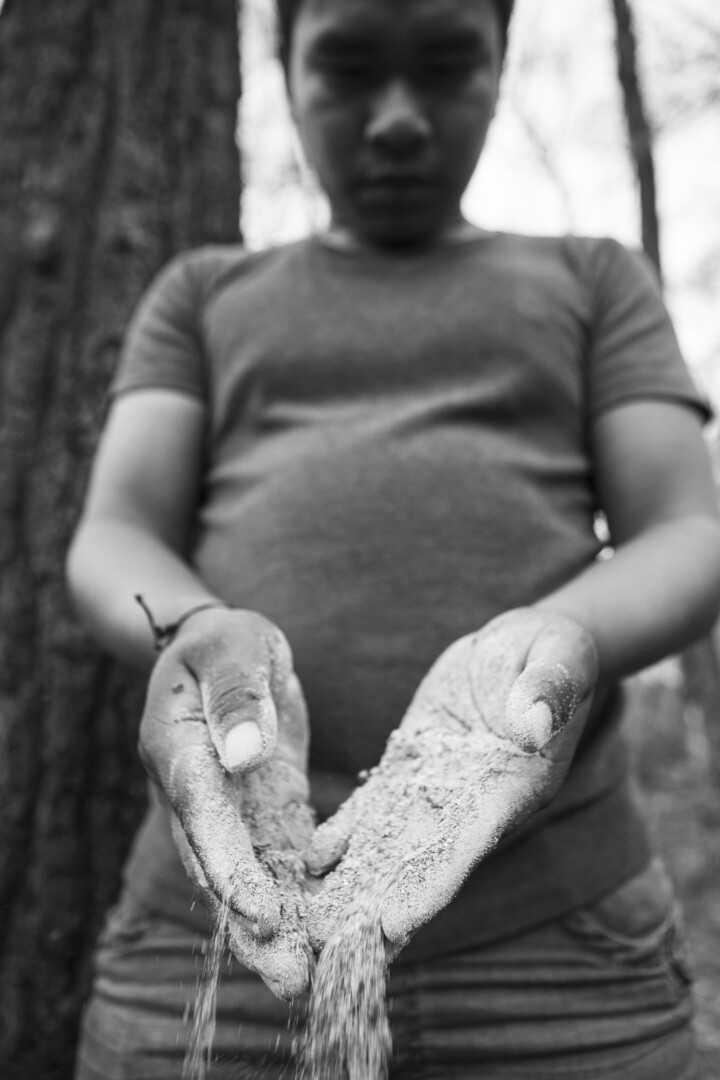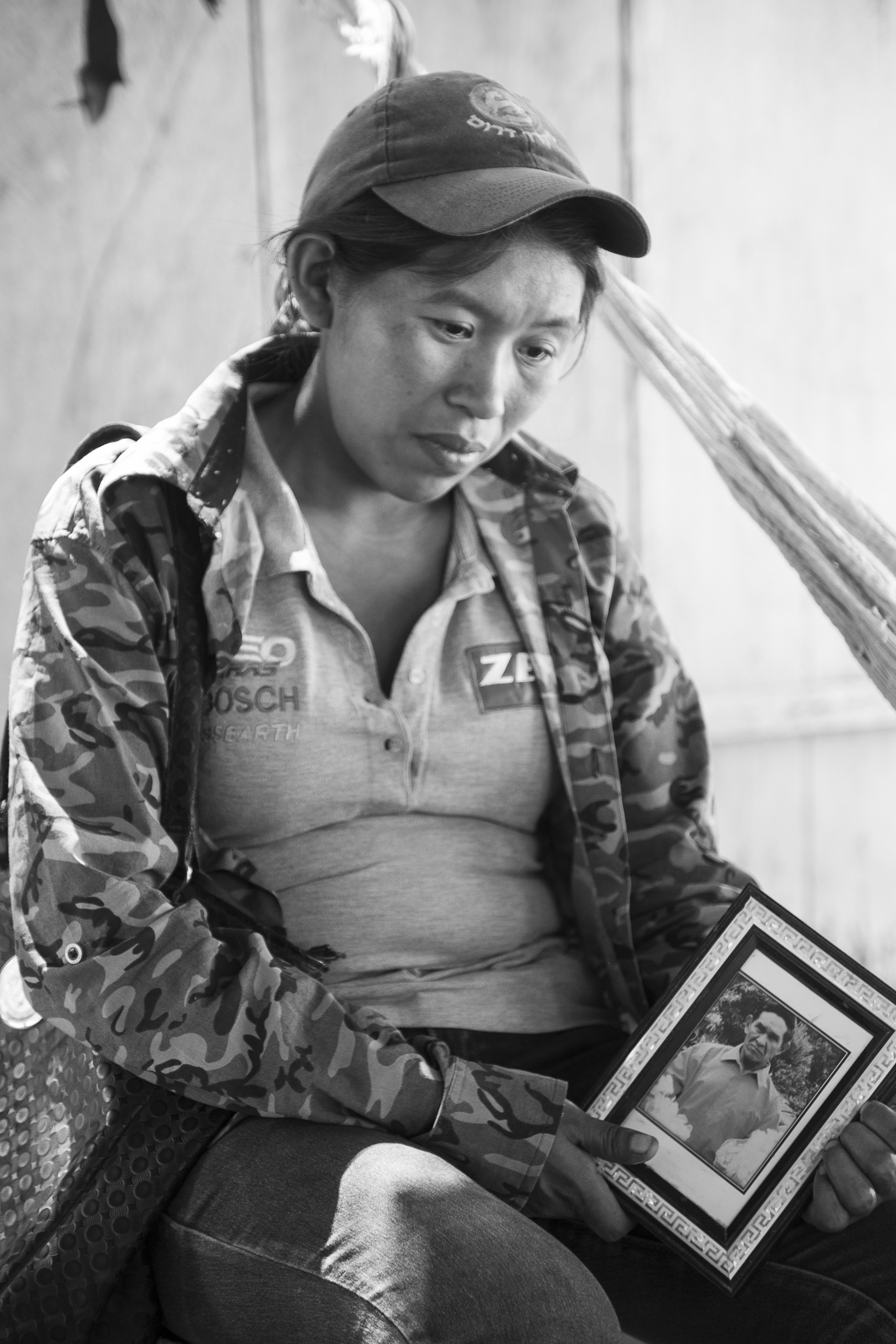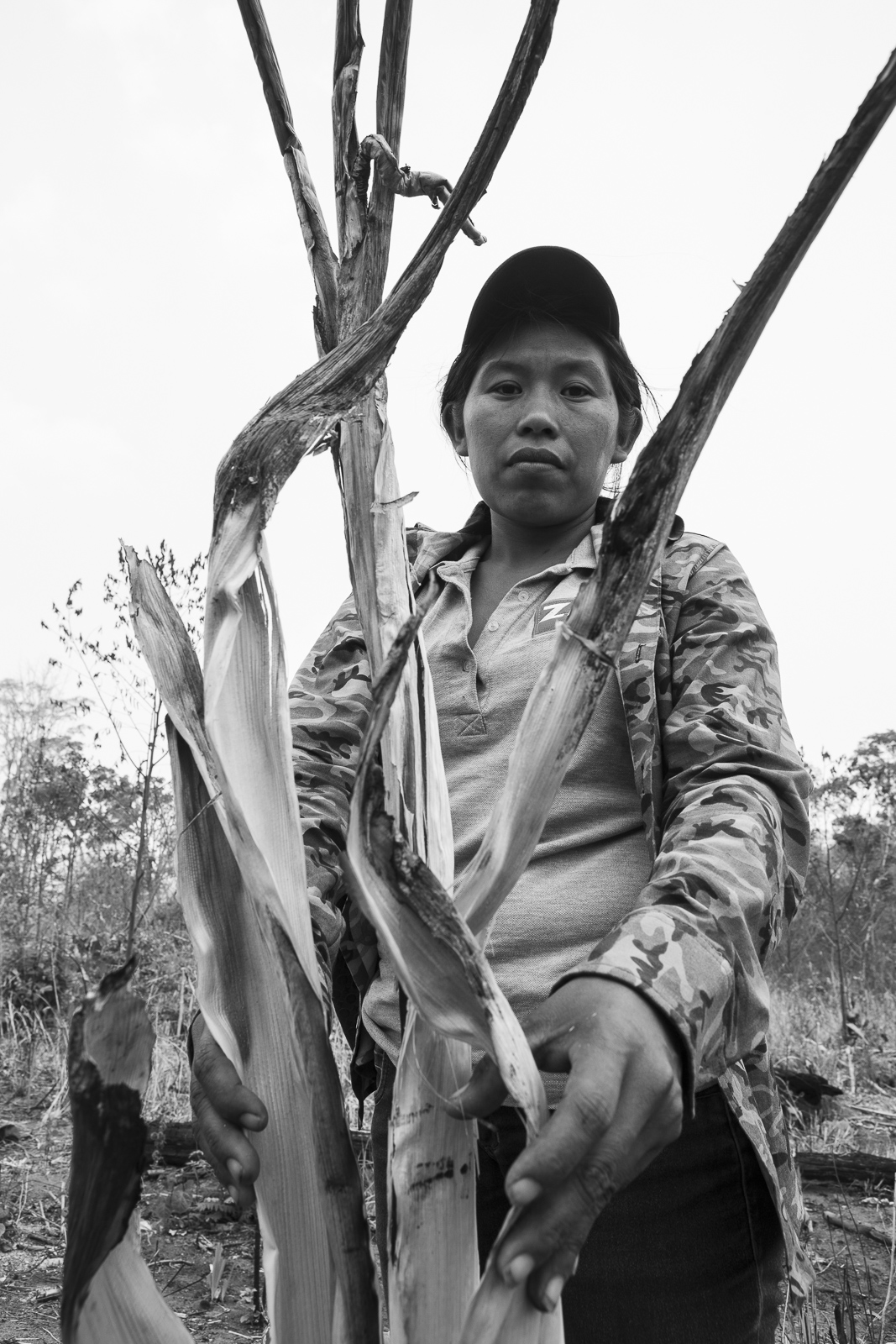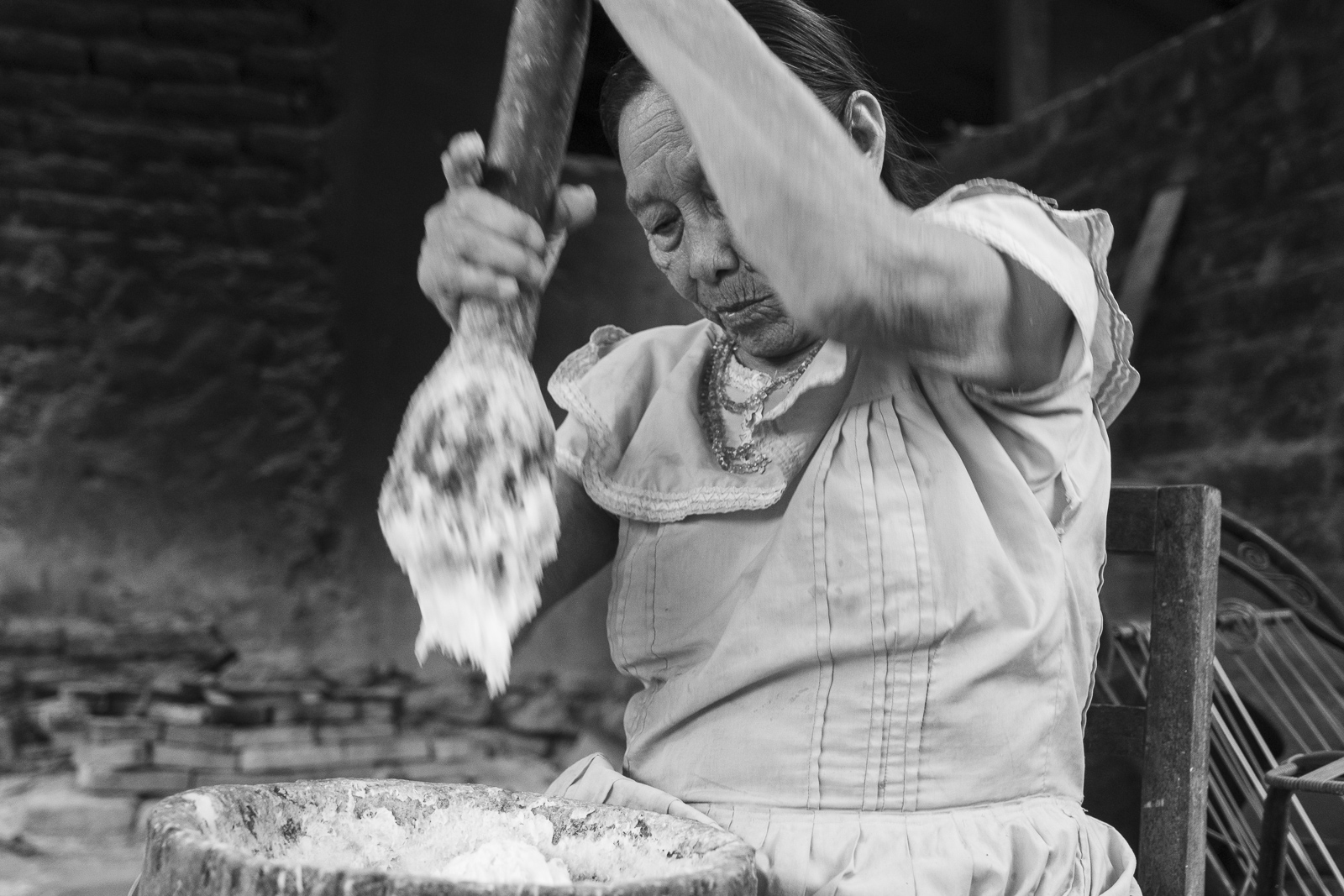“War and fires have much in common. It is not known how or when they begin, or how they will end. The only certainty is that the spark and fuel are human’s greed and ambition, and this is caused by lack of understanding and fear. Like all wars, fire only brings us sadness, pain and disease”
– Alcides V., an activist from Chiquitanía, Bolivian Amazon, September 2019
With their cameras loaded, two young indigenous photographers and filmmakers from the Ecuadorian Amazon began the long journey to the Bolivian Amazon amidst the fires. Jimmy Piaguaje and Ribaldo Piaguaje were headed to Chiquitano, in the country’s fire-ravaged lowlands of the southern Santa Cruz region.
The destruction of millions of acres of primary rainforest in the Bolivian Amazon by the fires are part of a global crisis and assault on the Amazon rainforest’s resources, and the lands and rights of indigenous peoples. Between May and September 2019, the world’s headlines were gripped by the apocalyptic images of burning forests across Bolivia, Brazil and Paraguay. The vast majority of the fires were intentional, and were fueled by the policy changes and agendas of governments in the region encouraging deforestation and promoting agribusiness and extractive interests at the expense of the rights of indigenous people and conservation. Today, indigenous people’s resource-rich rainforest territories are more threatened than ever by land grabbing, invasions, and deadly violence.
In this unique photo reportage, indigenous youth Jimmy Piaguaje and Ribaldo Piaguaje, along with members of Amazon Frontlines’ communications team, take us on a journey to investigate and experience the frontlines of the fires in the Bolivian Amazon and meet the affected communities, through their eyes, perspectives, and memories.
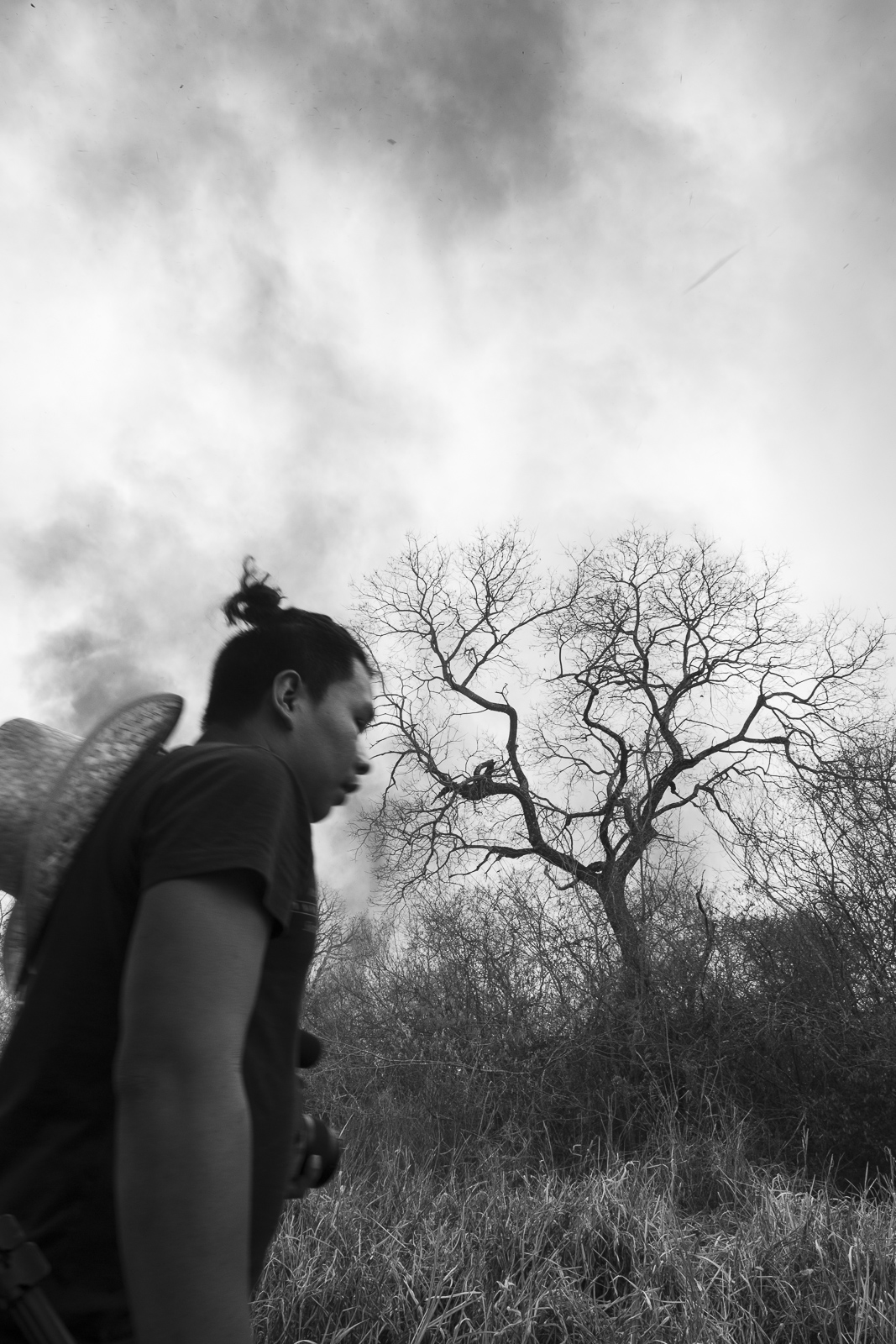
My name is Jimmy Piaguaje, I am a member of the indigenous Siekopai nation. I live in the northern Ecuadorian Amazon. I dedicate myself to community media and communication by creating films, documentaries and photography in order to strengthen the oral memory of my people. For over fifty years, our ancestral territory has been affected by the presence of oil companies, the construction of roads, and more recently, African palm plantations.
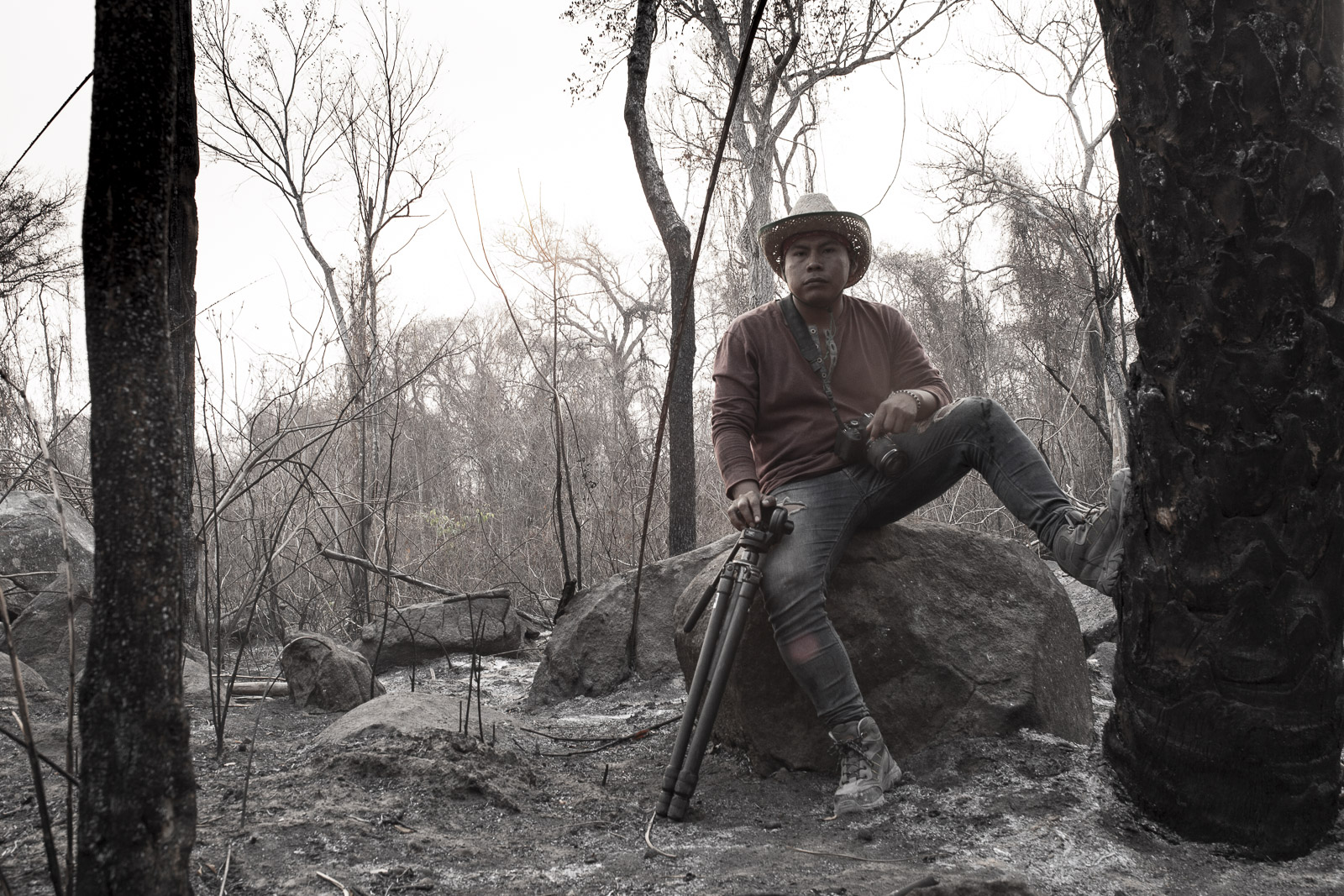
Jimmy Piaguaje, indigenous youth of the Siekopai Nation in Ecuador’s Amazon
My name is Ribaldo Piaguaje and I am also an indigenous youth of the Siekopai Nation in Ecuador’s Amazon. I am passionate about photography, video and audiovisual editing. I like to tell the stories of my grandparents and ancestors through these media, and show how extractive interests have divided and threatened our people, without respect for our will and our needs.

Ribaldo Piaguaje during the first day of filming in the Santacruceñas pampas

Sunset and smoke in Chiquitanía during the fires
Over the course of several months, we had been seeing a lot of news about the fires in the Amazon. We really wanted to understand the problem, and we wanted to hear directly from the people whose communities had been affected by the fires, in order to understand the real causes and impacts.
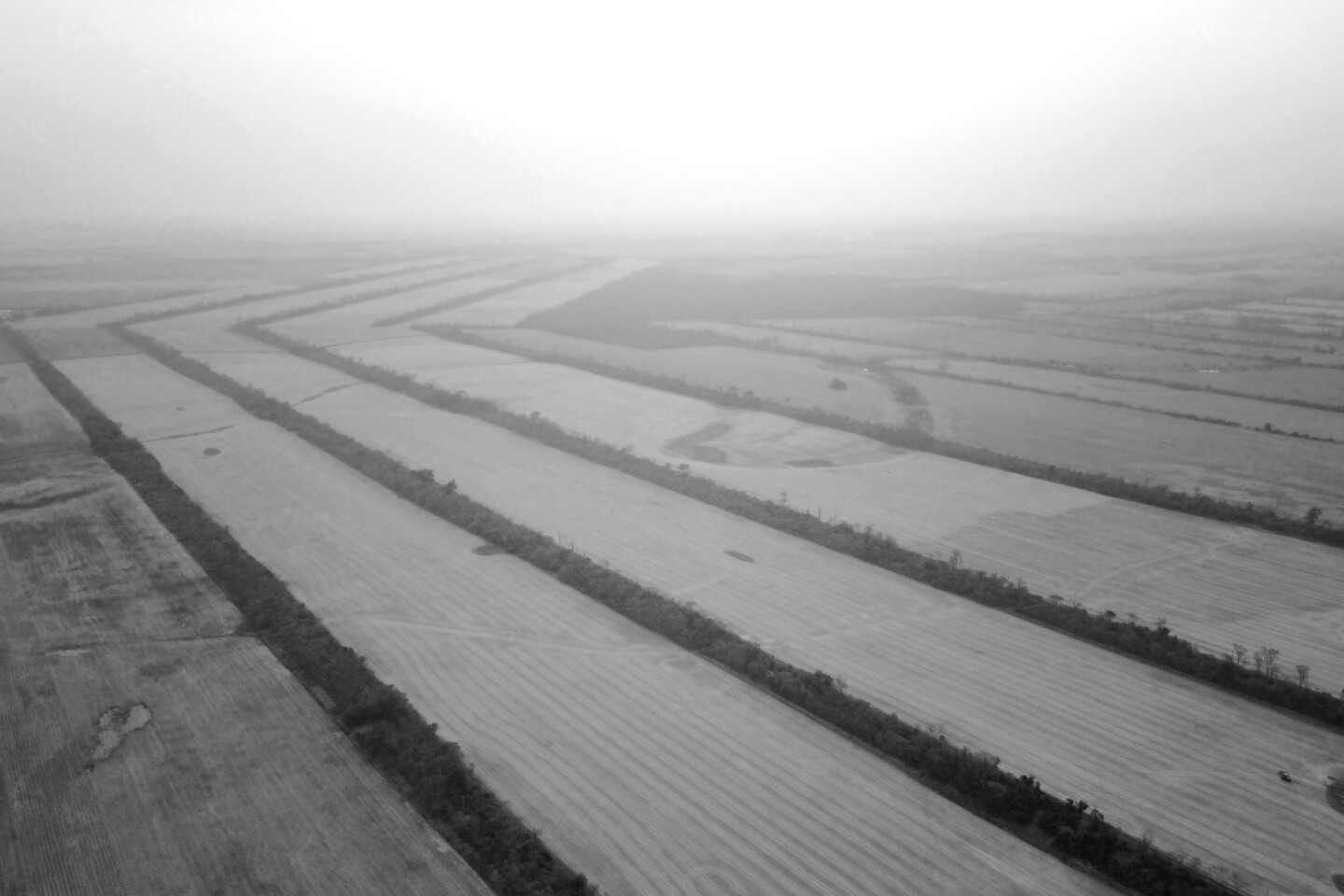
We arrived at the city of Santa Cruz, an Amazonian frontier town in Bolivia, and one of the closest cities to where the fires were burning. We were on our way to Chiquitanía. Along the way, we were surprised by the hundreds of acres of land deforested for livestock, and large monocultures of soya, sunflower and grains.
The cracked soil looked poor and dry. Nearly all the plants were dead. Just a few isolated trees provided a few meters of shade for the earth. It was much hotter and less humid than in our rainforest home, and the water had disappeared from the landscape: there were no rivers or swamps. The environment seemed almost lifeless.
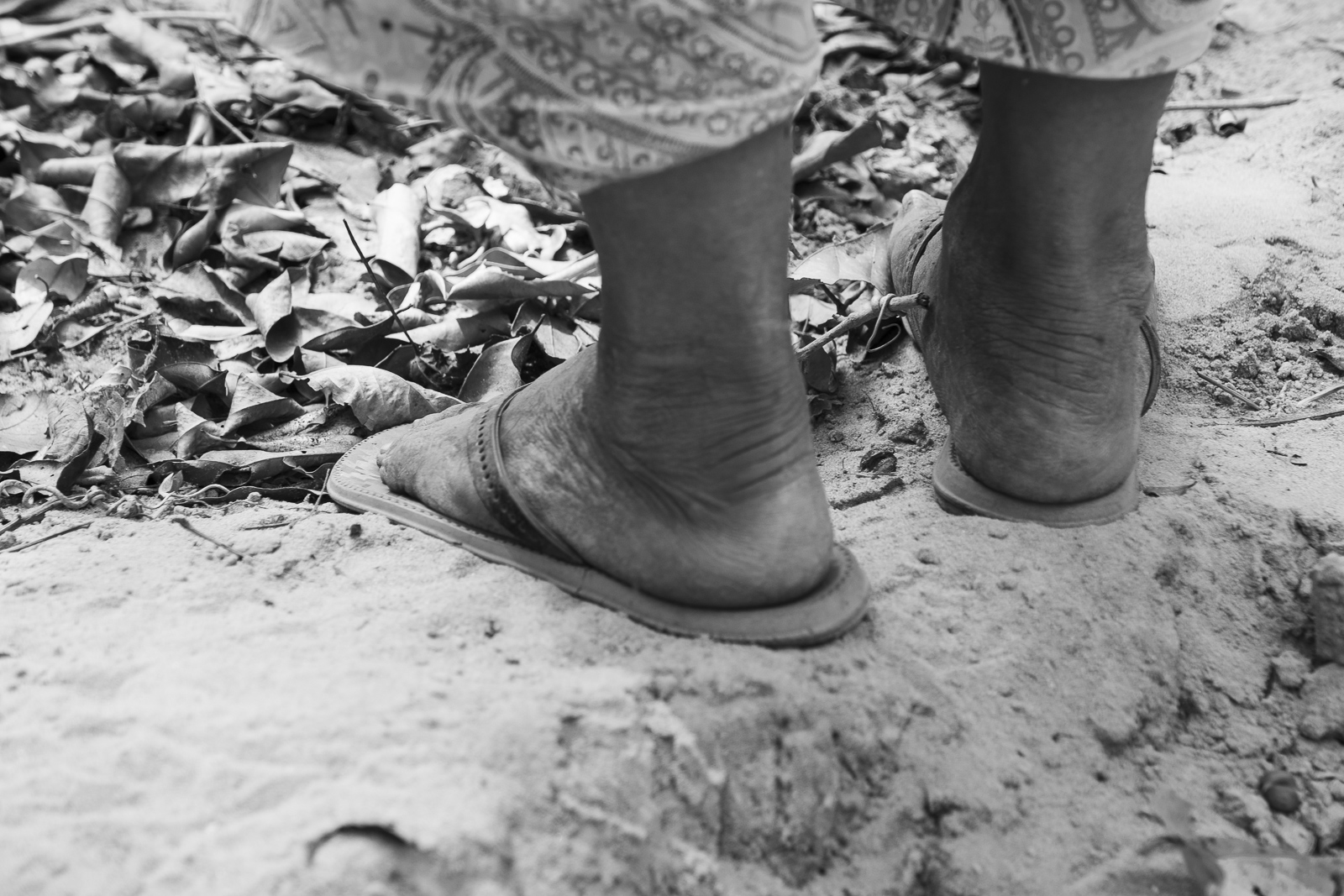
The ground was dry and cracked. We could sense the impacts of a terrible drought in the appearance of the environment.
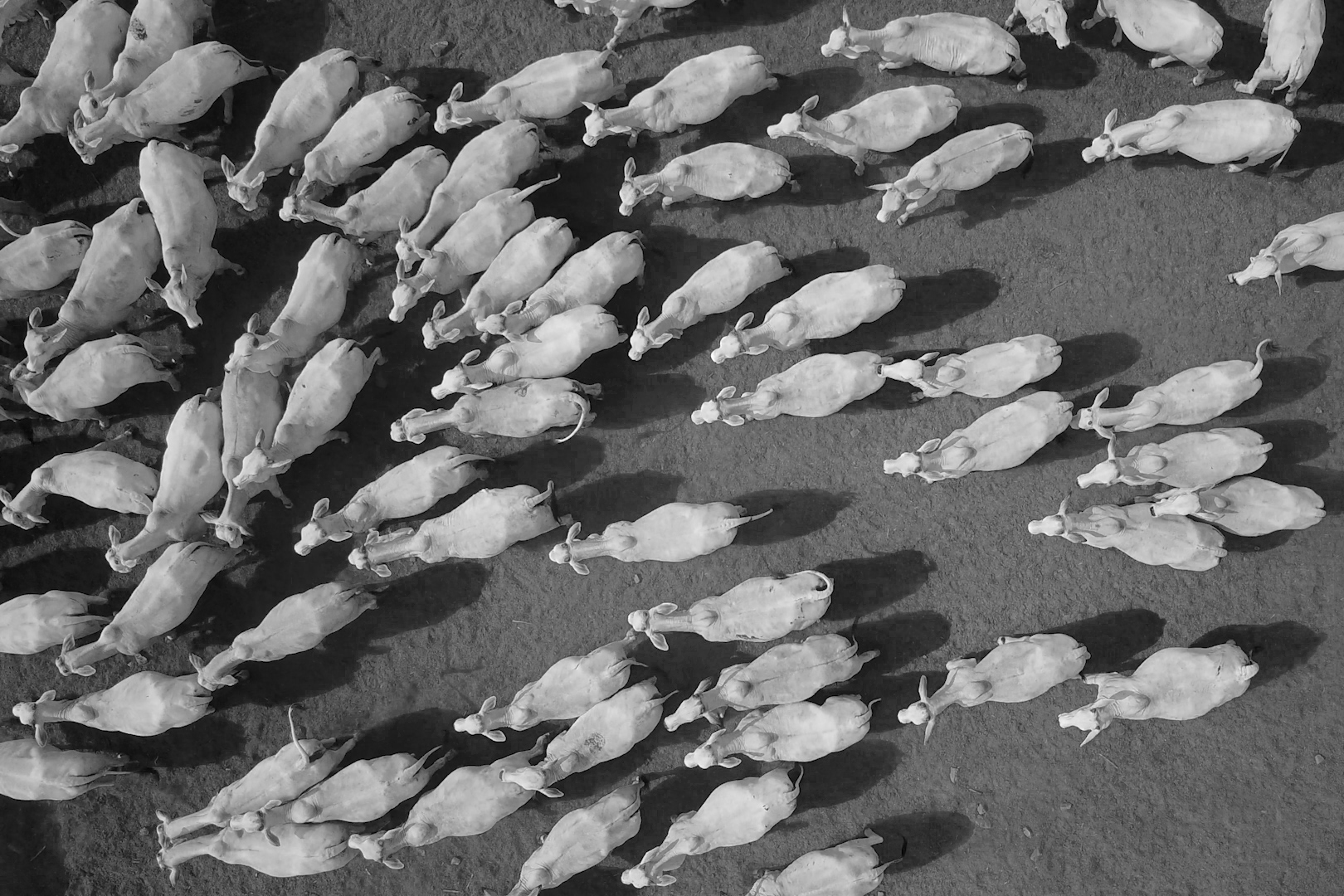
Aerial view of the livestock farms in Chiquitanía, as documented by our drone
As we traveled deeper into the Chiquitana region, we saw the blue sky of Santa Cruz turn gray with smoke, and we saw the devastation left by the fires along the road.
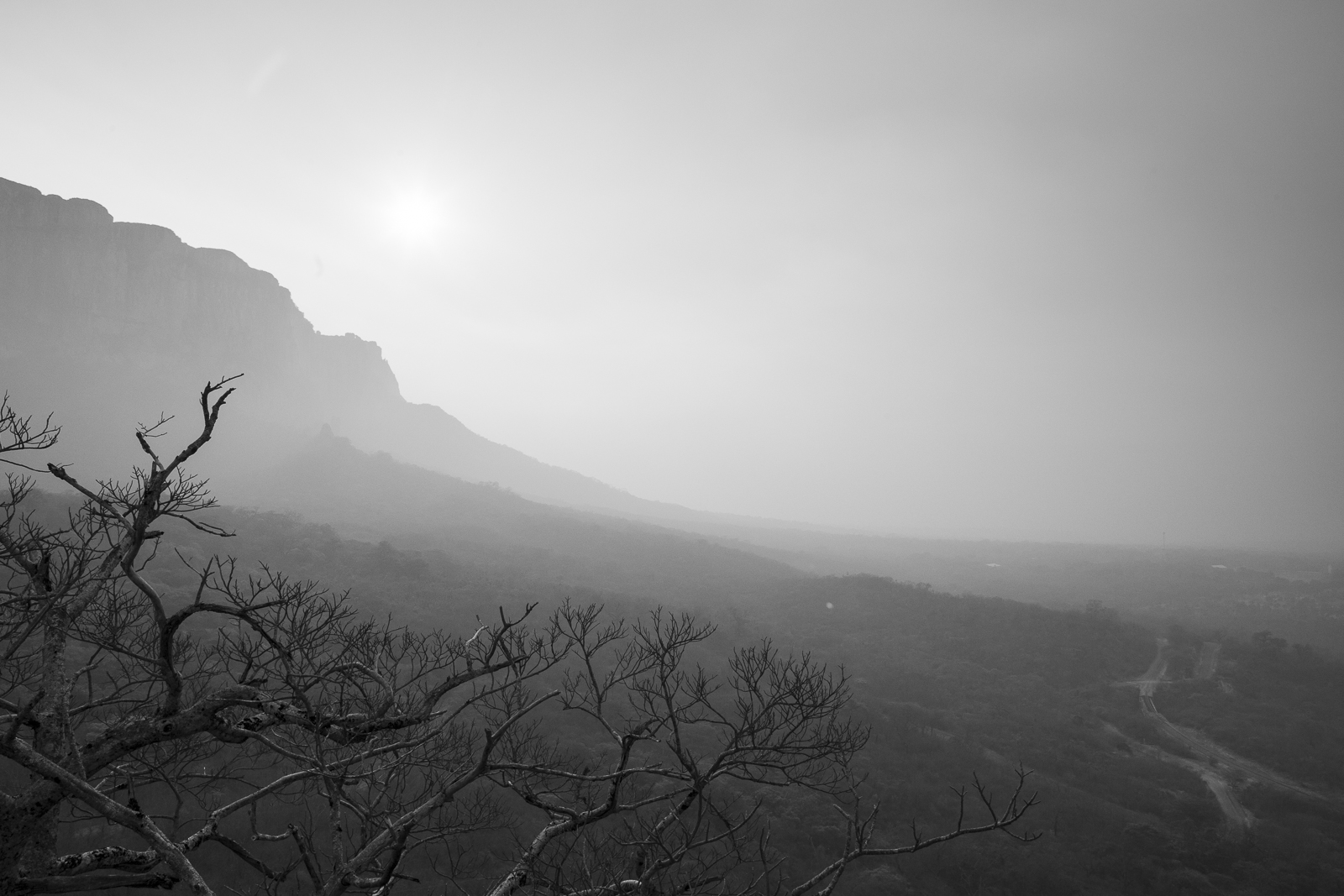
From the hill Chochis, located in the center of the Chiquitanía region, we could see the smoke blurring into the landscape
We asked ourselves, how is it possible that a country such as Bolivia has let such a disaster happen on its lands? Why were these fires happening? Who was lighting them and why?
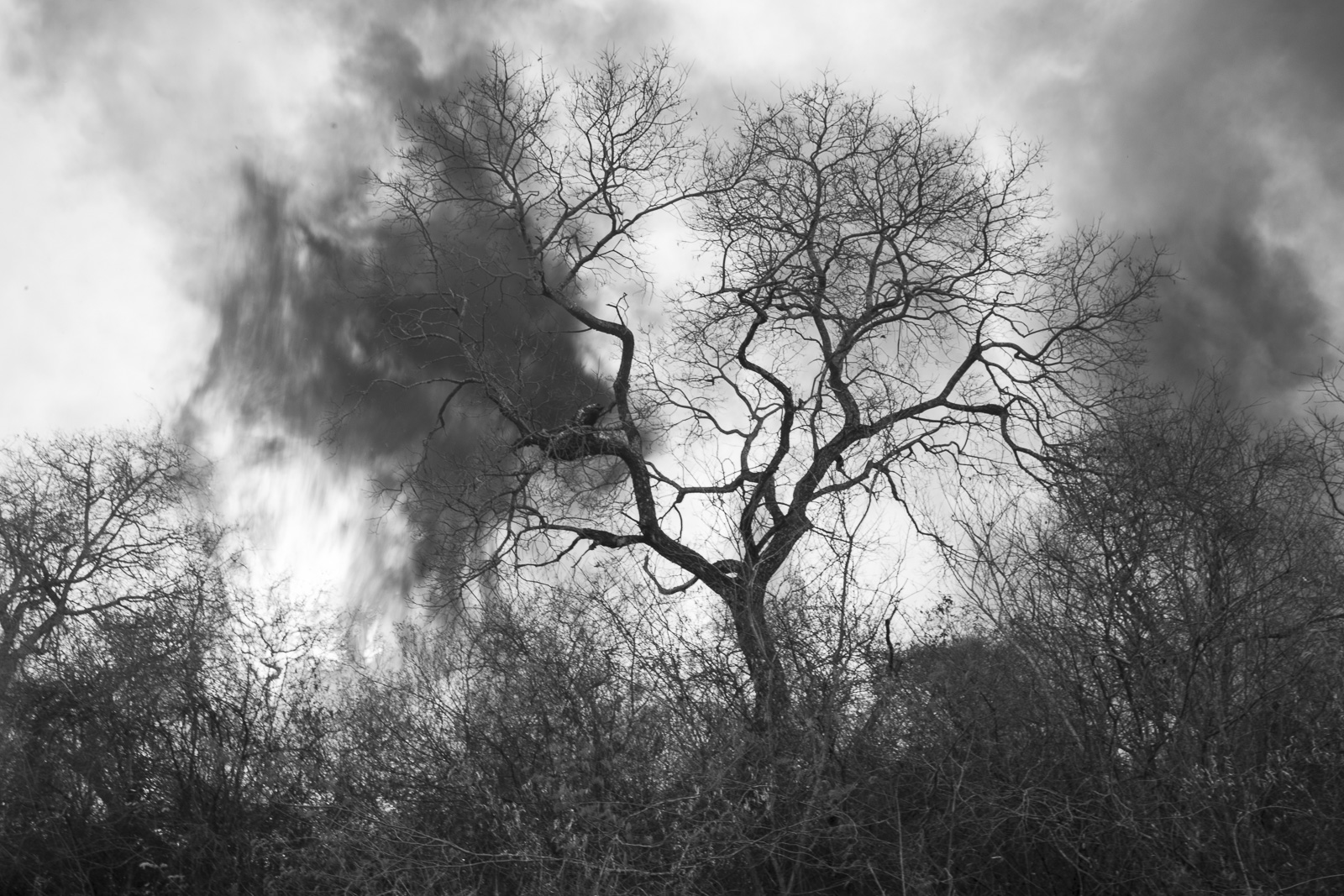
After traveling a few hours inside the dry forest, we arrived to a giant fire raging across thousands of hectares of the Chiquitano forest. The fire reached up into the sky some 6 to 8 meters and its immense columns of smoke eclipsed the sun.
As the fire rapidly progressed, birds fled by the flock, and a trail of calcinated animals and insects that tried to escape in vain was left in its wake. Only heat and smoke filled this new hostile and desolate environment.
Within a matter of hours, the fire had consumed everything. The patient work of nature, over hundreds of years, had just disappeared before our very eyes.
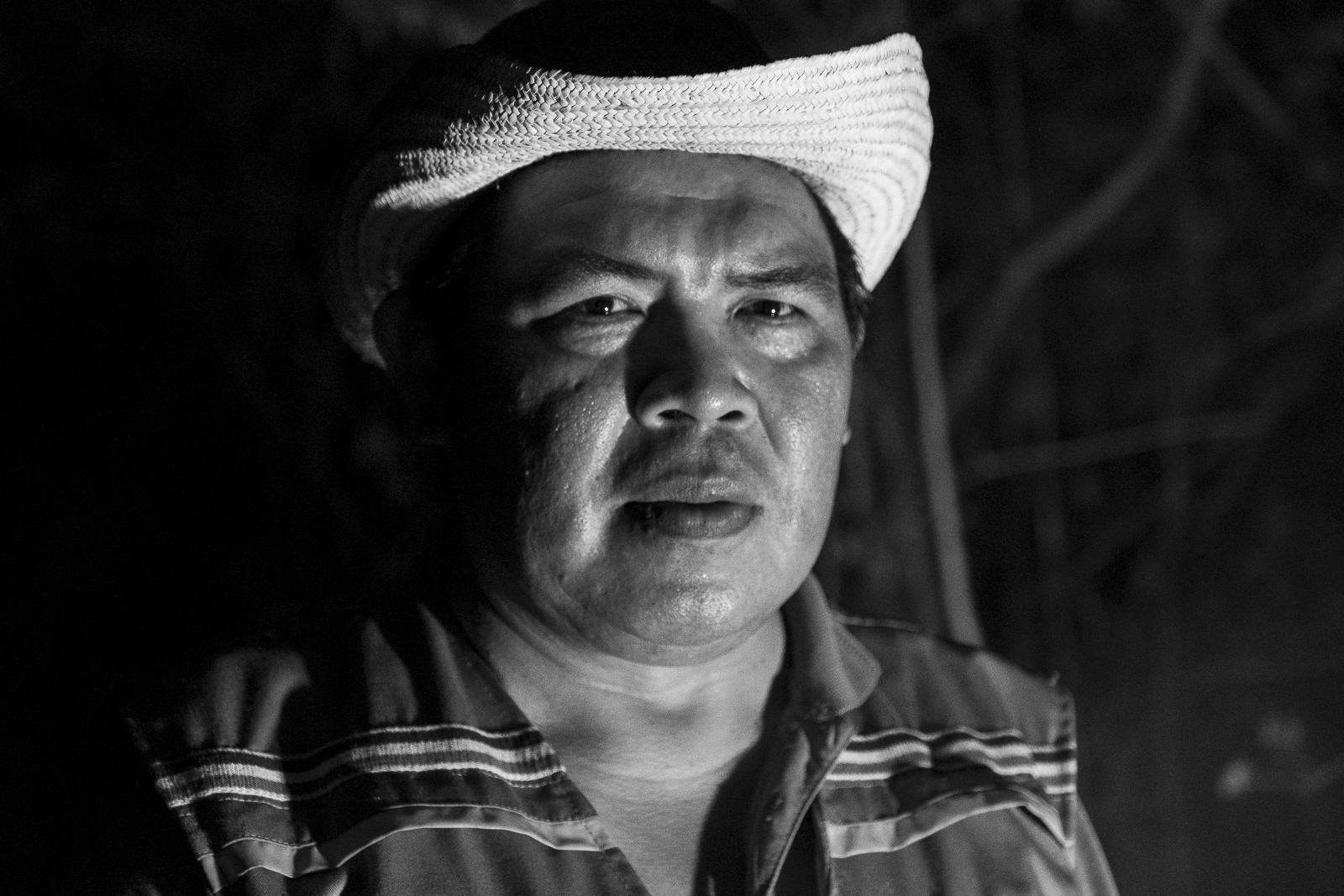
Elmar, Chiquitanos Indigenous leader of the Lomerío Municipality
In the community of San Agustín, we listened to the testimonies of community members who had been fighting the fierce fires for weeks, with simple tools such as fumigation bombs, sticks, and machetes.
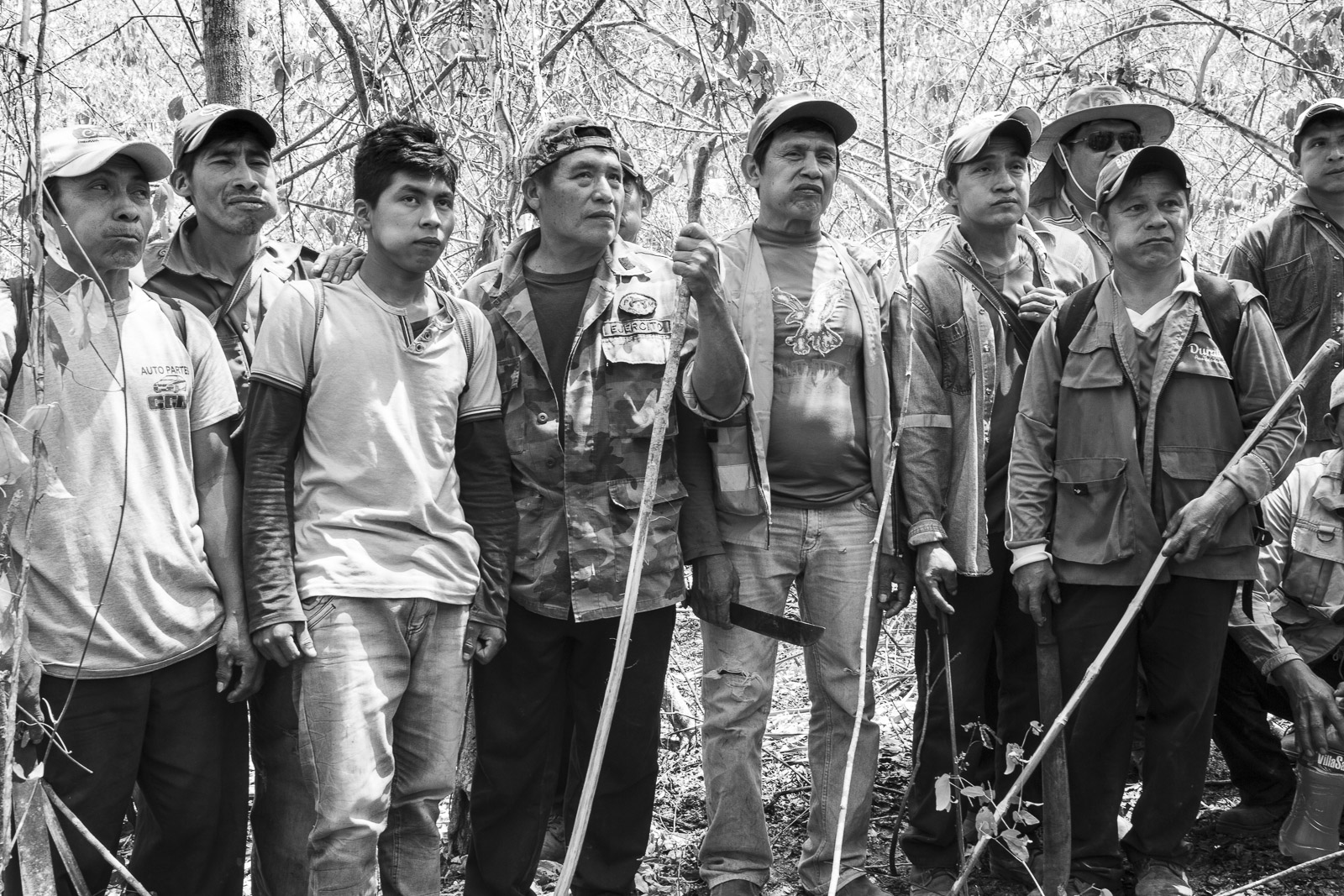
Indigenous people, volunteers, firefighters and soldiers organize themselves in groups and take turns fighting fires
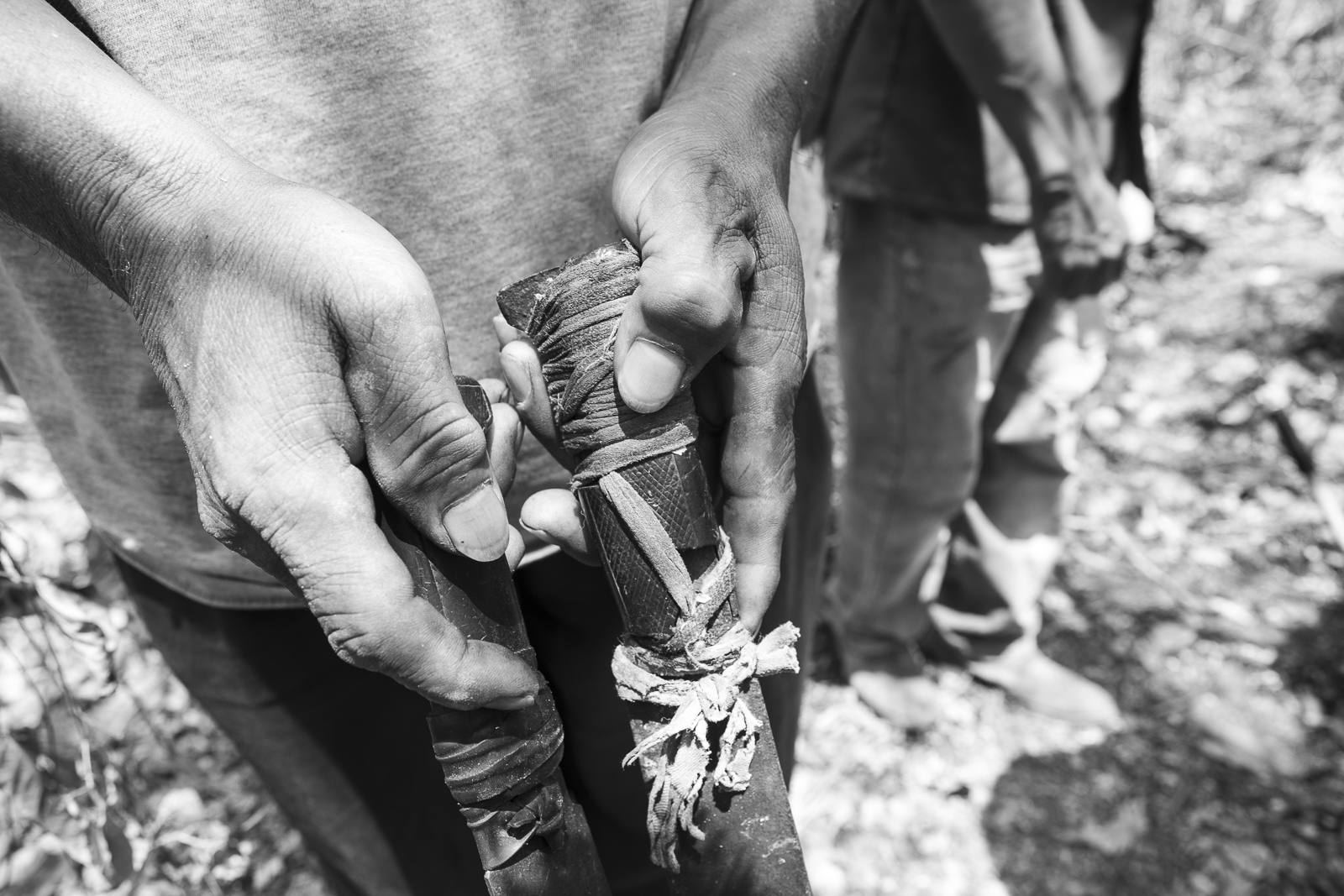
Machetes and sticks with curved tips are used by the villagers to put out the eddies of fire
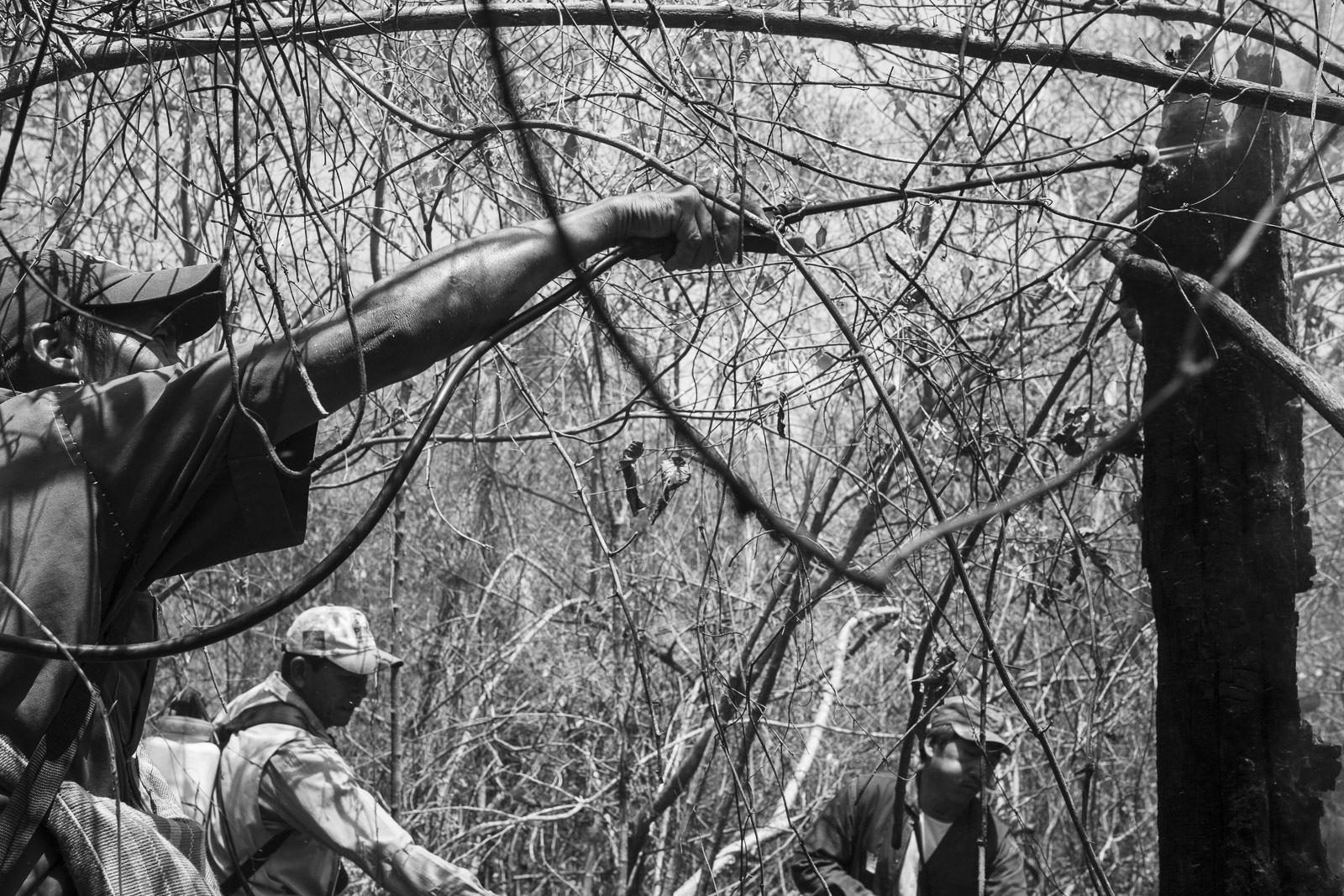
Indigenous firefighters from various communities organized to fight fire in their communities, with makeshift tools
In several places, the fire surrounded their houses. We could feel their worry and despair. They were tired of working struggling against the fires and government aid was scarce.
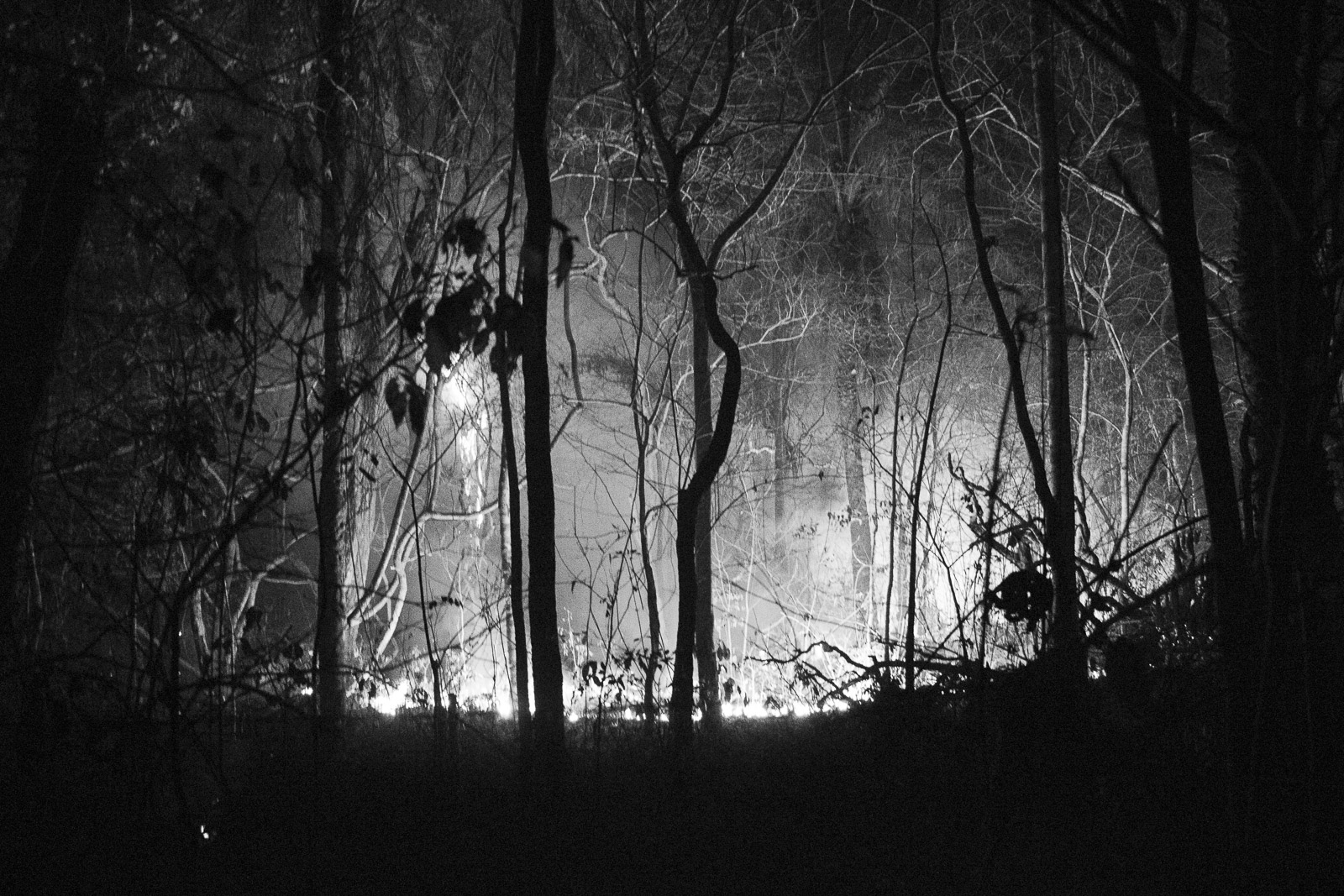
Indigenous peoples’ efforts to combat these fires were impressive. They sometimes walked all night in the forest carrying several gallons of water to extinguish the fires, taking the work in turns throughout the day.

Indigenous firefighters and volunteers chewed coca (known as “boleaba”) during the hard working days in the bush

In local stores, coca is sold for personal consumption. Our team of communicators learned to “mambear bolear” in order to stay active and focused for long hours
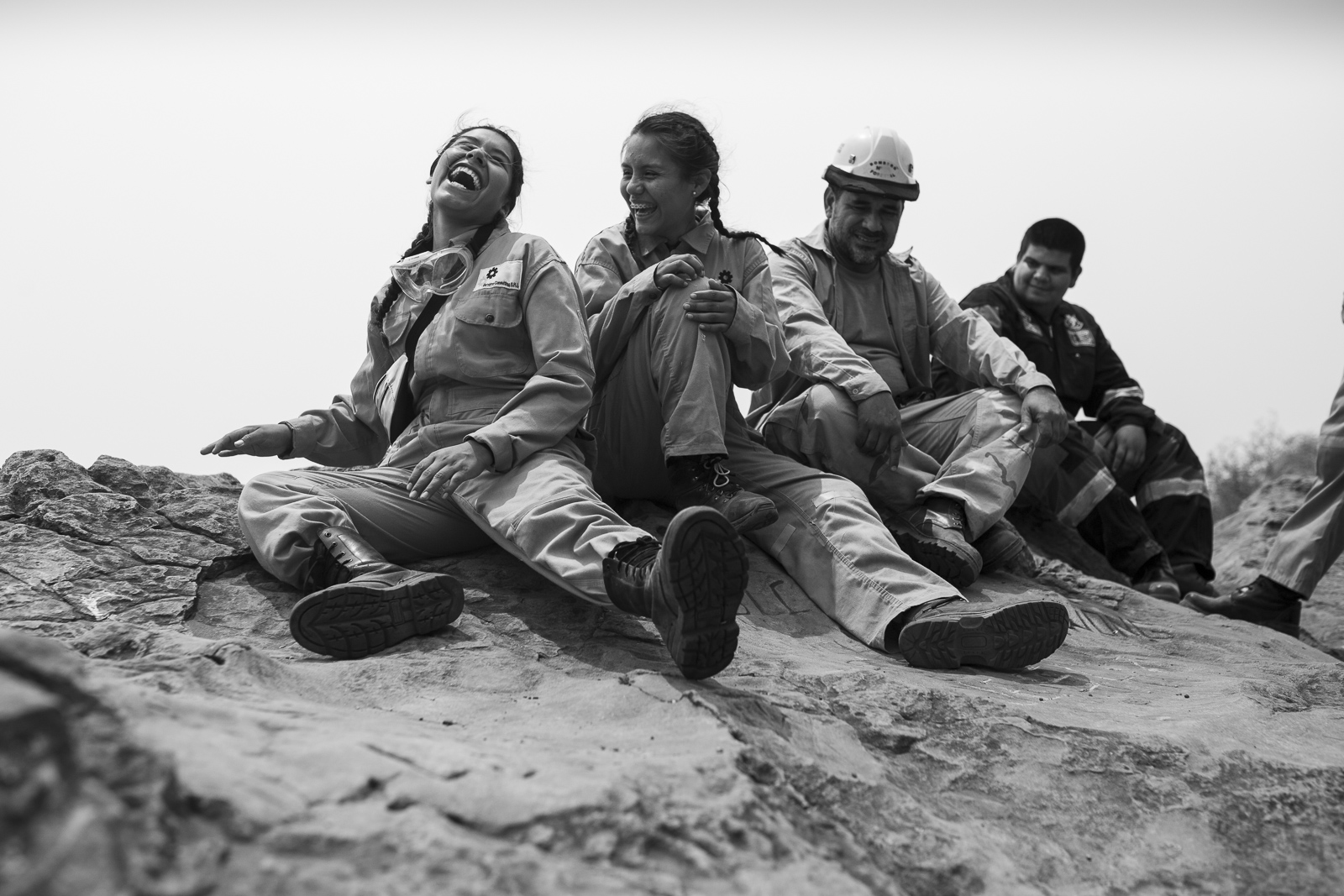
Many of the volunteers we met came from distant places in Bolivia and stayed for more than two months in the area. During this time, several were wounded or suffocated as a result of the fires

Local efforts to combat the fires were supported by the military, council members and police, as well as volunteers from civil society across Bolivia.
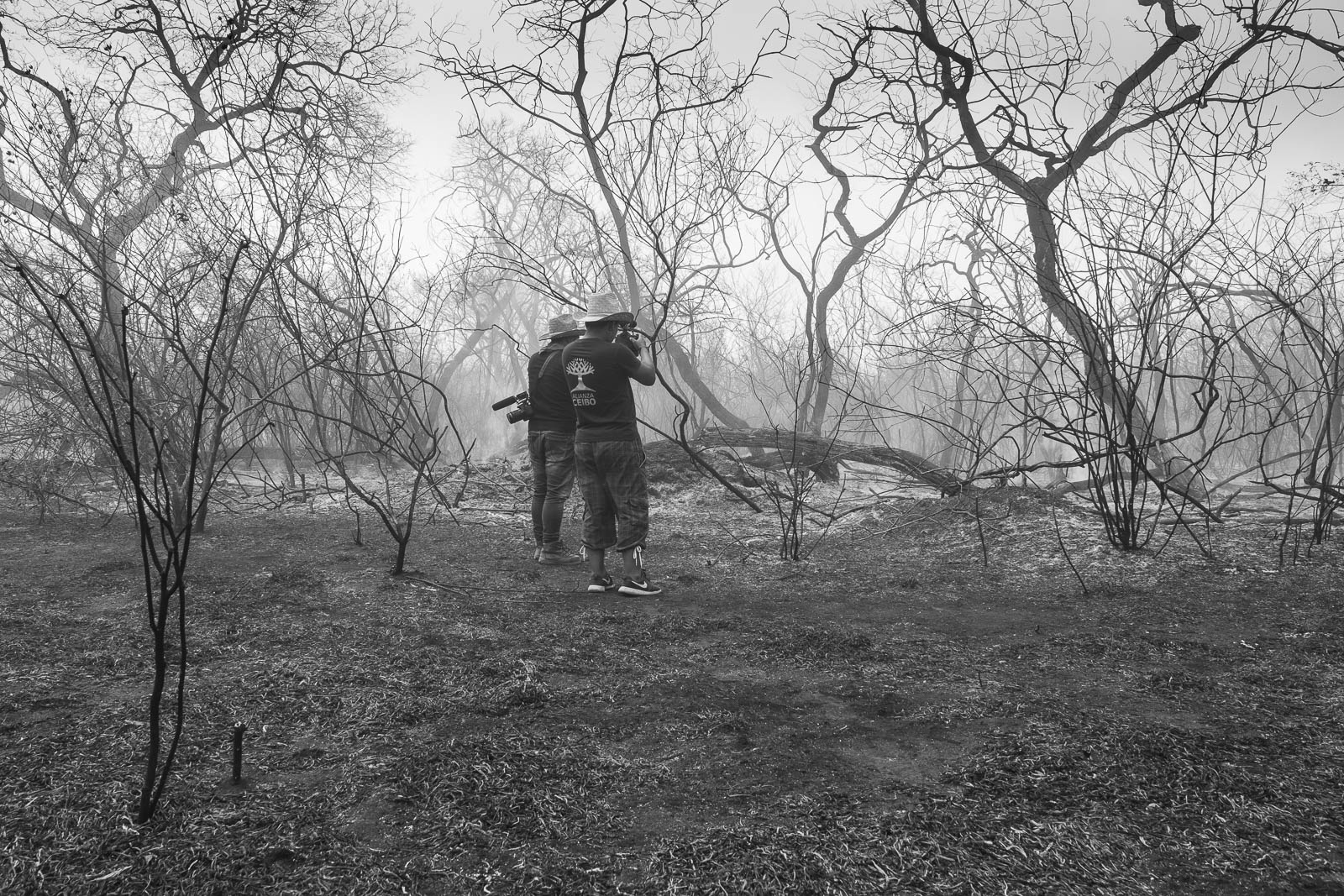
As we walked through the desolate land through which the fires had passed, we found calcinated animals. What had once been forest was now only ashes and charred logs.

A grandmother told us how she remembered her community 20 years ago: “Before we had many animals and birds, and fish abounded in the rivers. The forest is our mother who gives us food, but today the river is dried up, many of the animals are gone, and we don’t even have drinking water.”
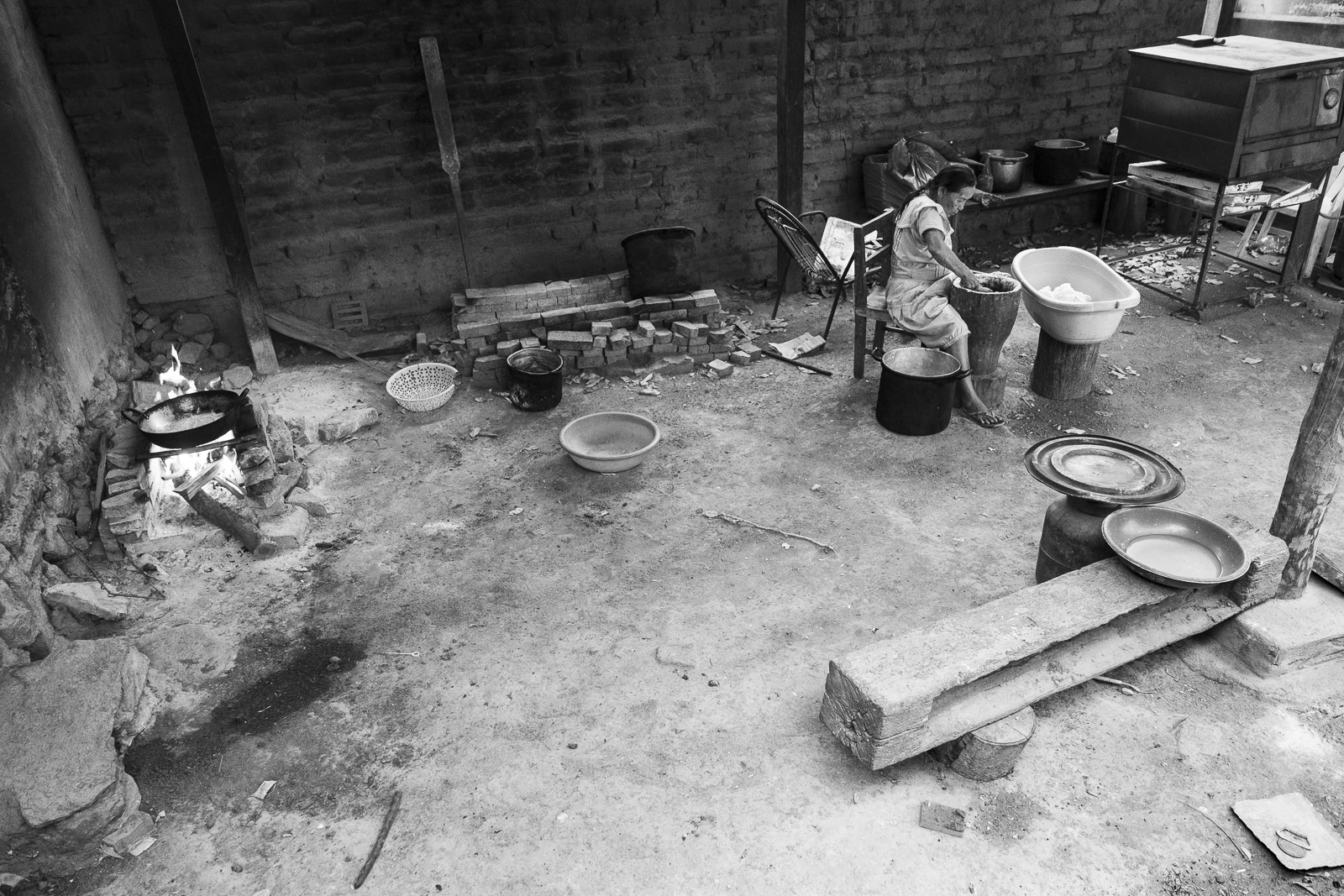
Cassava and rice-based breads, cassava root, and a fermented banana drink: our indigenous Bolivian brothers and sisters’ traditional foods which they prepare similarly to us
“What are we going to eat? What will our children eat tomorrow? And what about our animals?”
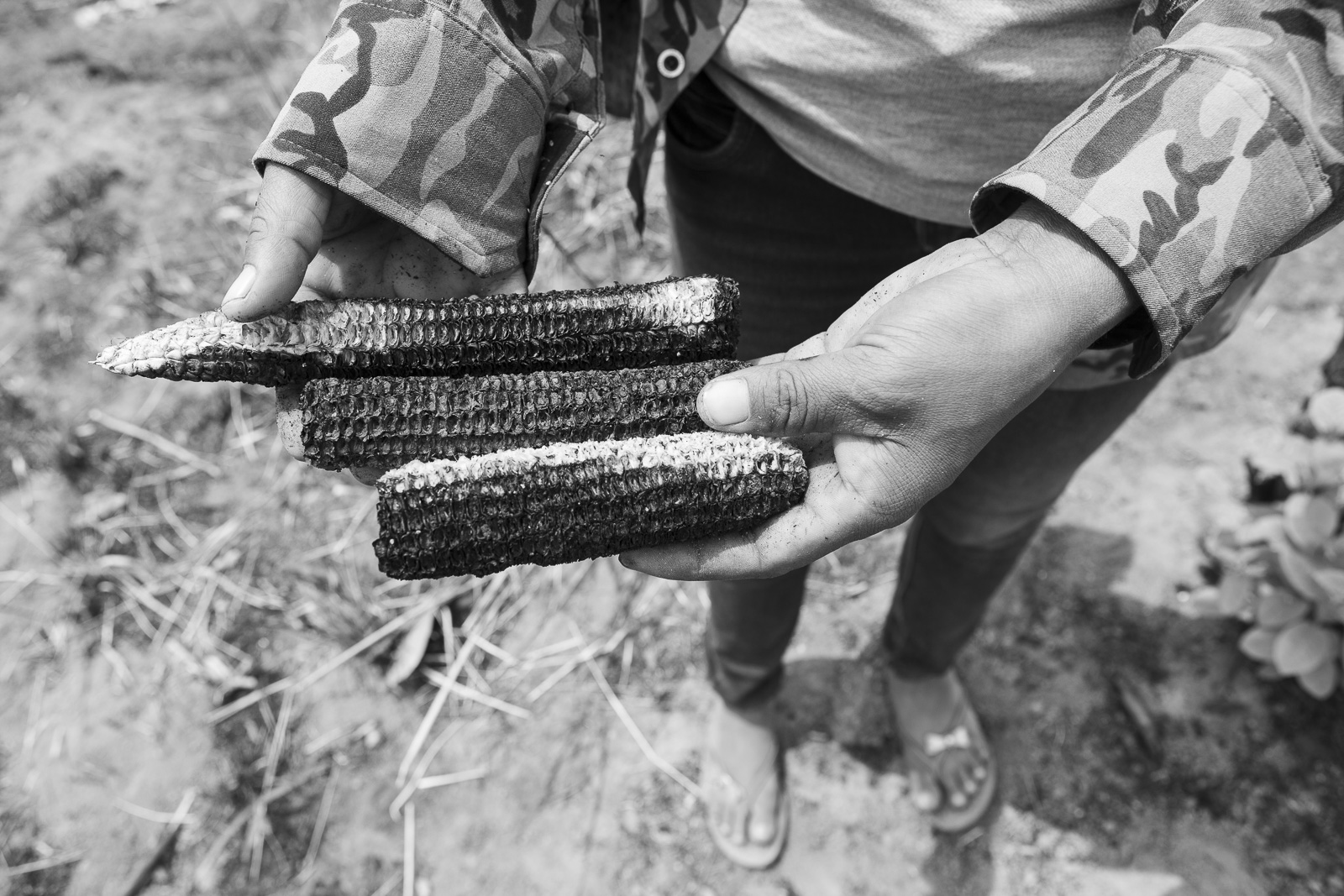
Burned corn puts on display the difficult situation faced by our indigenous brothers and sisters as they run out of food
Ignacia invited us to visit her chaco (chakra, traditional garden). Her crops were burnt down. Coffee, bananas, cassava, medicinal plants and other produce were consumed by the fire
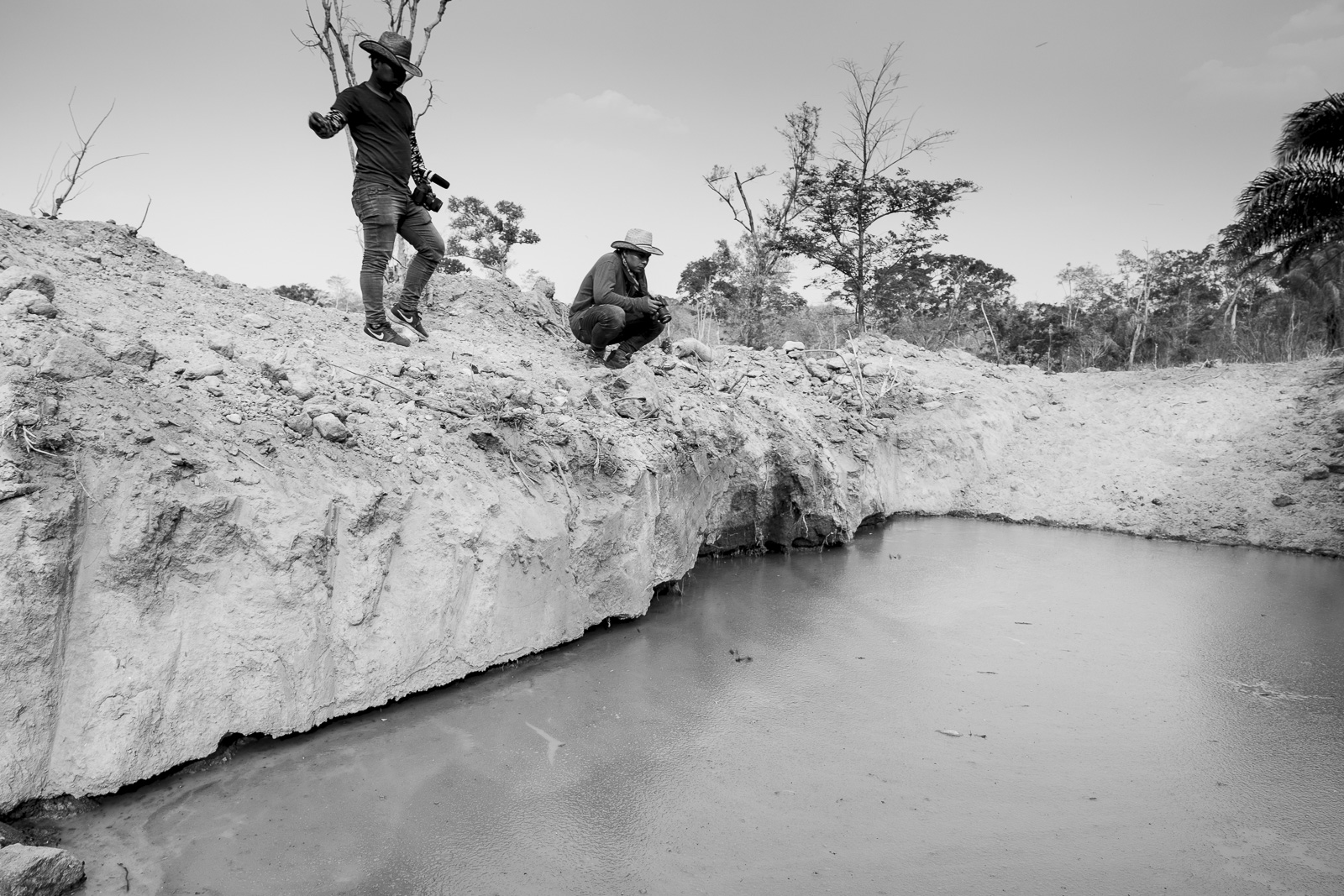
Drinking hole for community members’ cattle
“The weather has changed completely”, she told us with tears in his eyes. We watched with indignation as the community members made a hole in the ground with hopes of finding muddy water for their cattle.
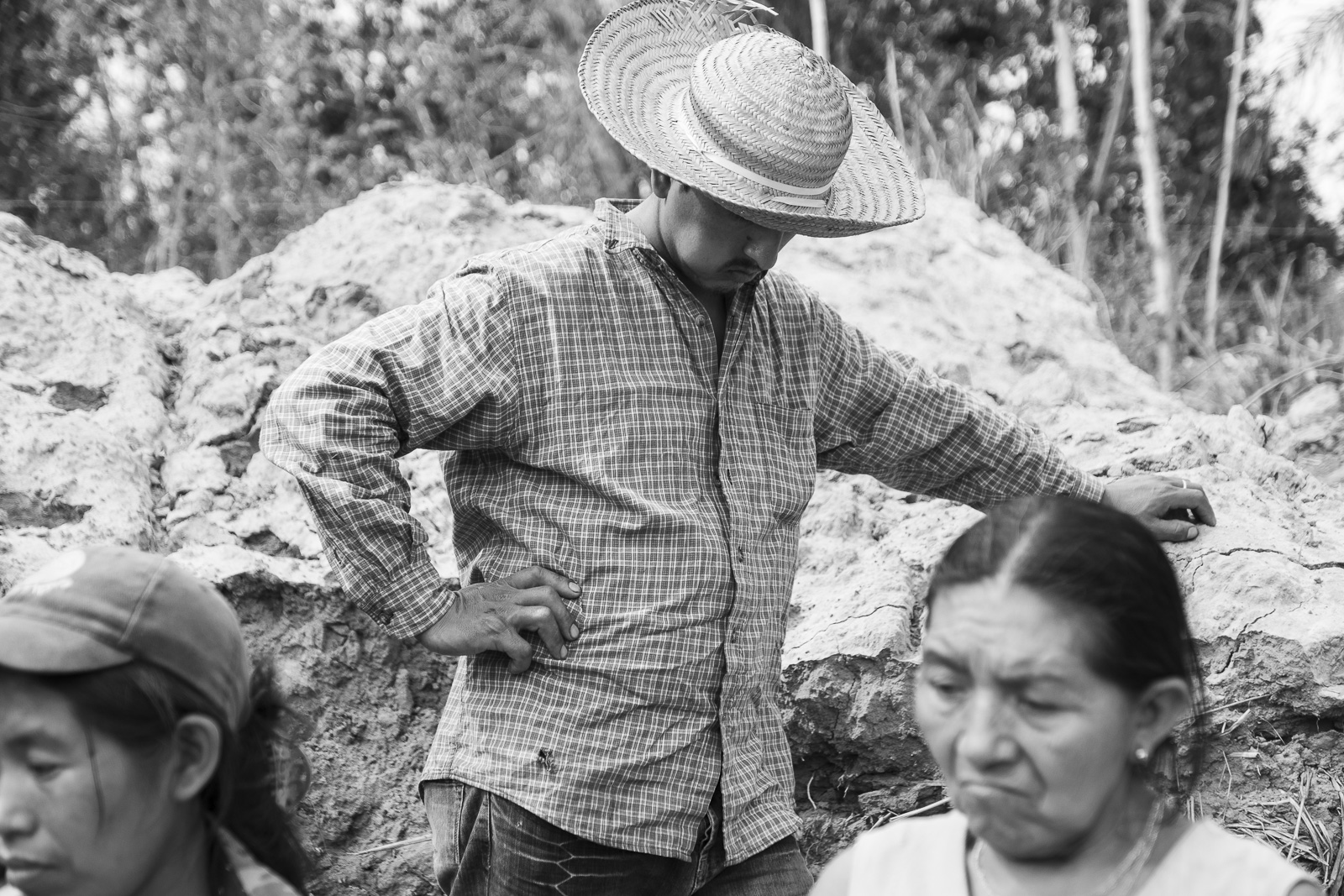
Locals are faced with water shortages and drought

Dead cattle near the community

The dry riverbed in Chiquitania
That day, we understood the difficulties that this indigenous community faces. A small truck delivers 6 liters of water per family – for the whole week.
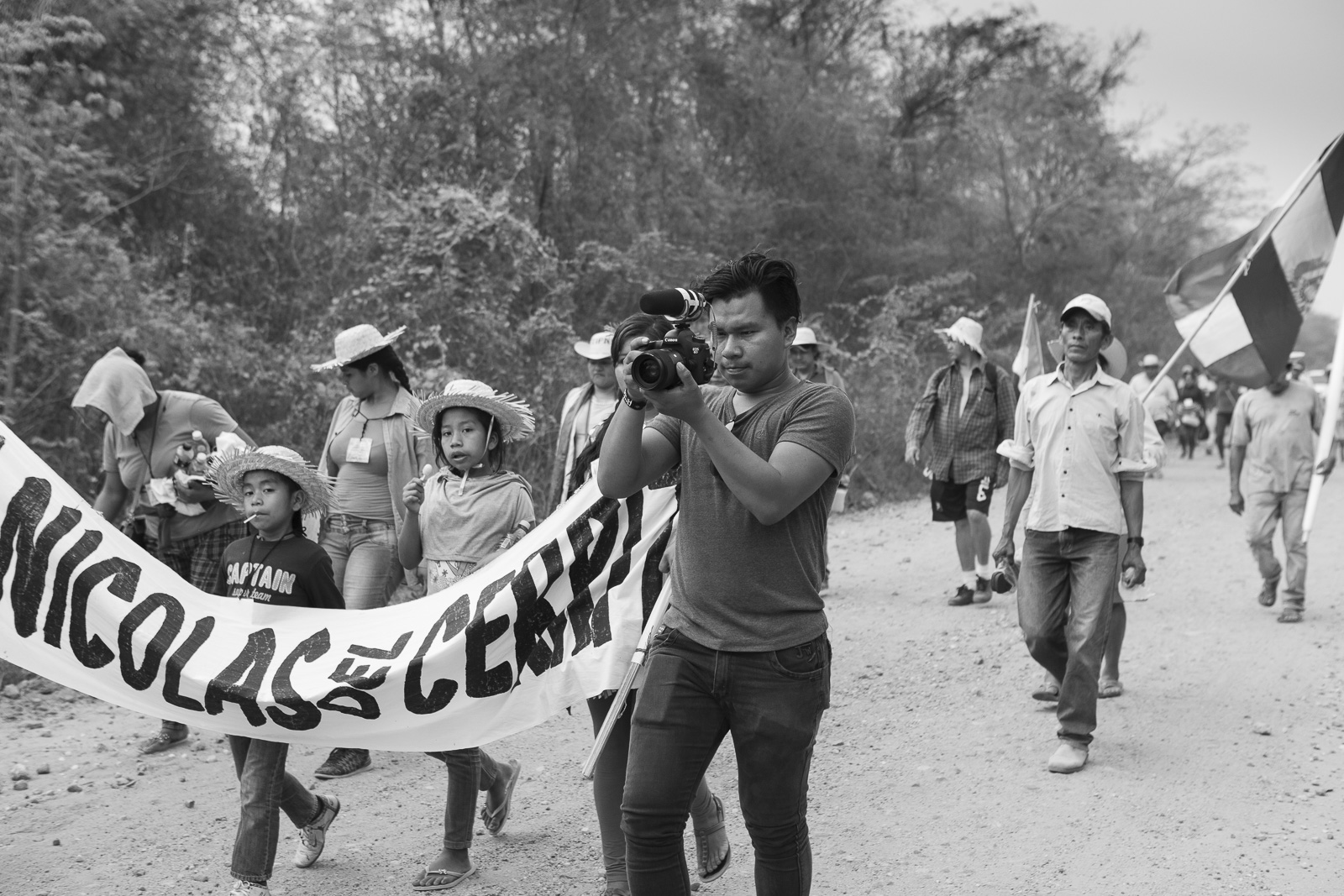
Half way through our journey, we found ourselves marching in an indigenous mobilization heading hundreds of miles towards the regional capital of Santa Cruz de la Sierra. The march voiced people’s discontent with the State’s policies regarding land use, excessive colonization, forest fires and agricultural frontier expansion, and demanded that a state of emergency be declared in indigenous people’s ancestral territories affected by the fires.

Marching with indigenous leaders, families and supporters towards Santa Cruz to demand justice
Indigenous people wanted their voices to be heard. They were speaking out against the exploitation and looting of their territories by big cattle ranchers, agribusinesses and loggers.
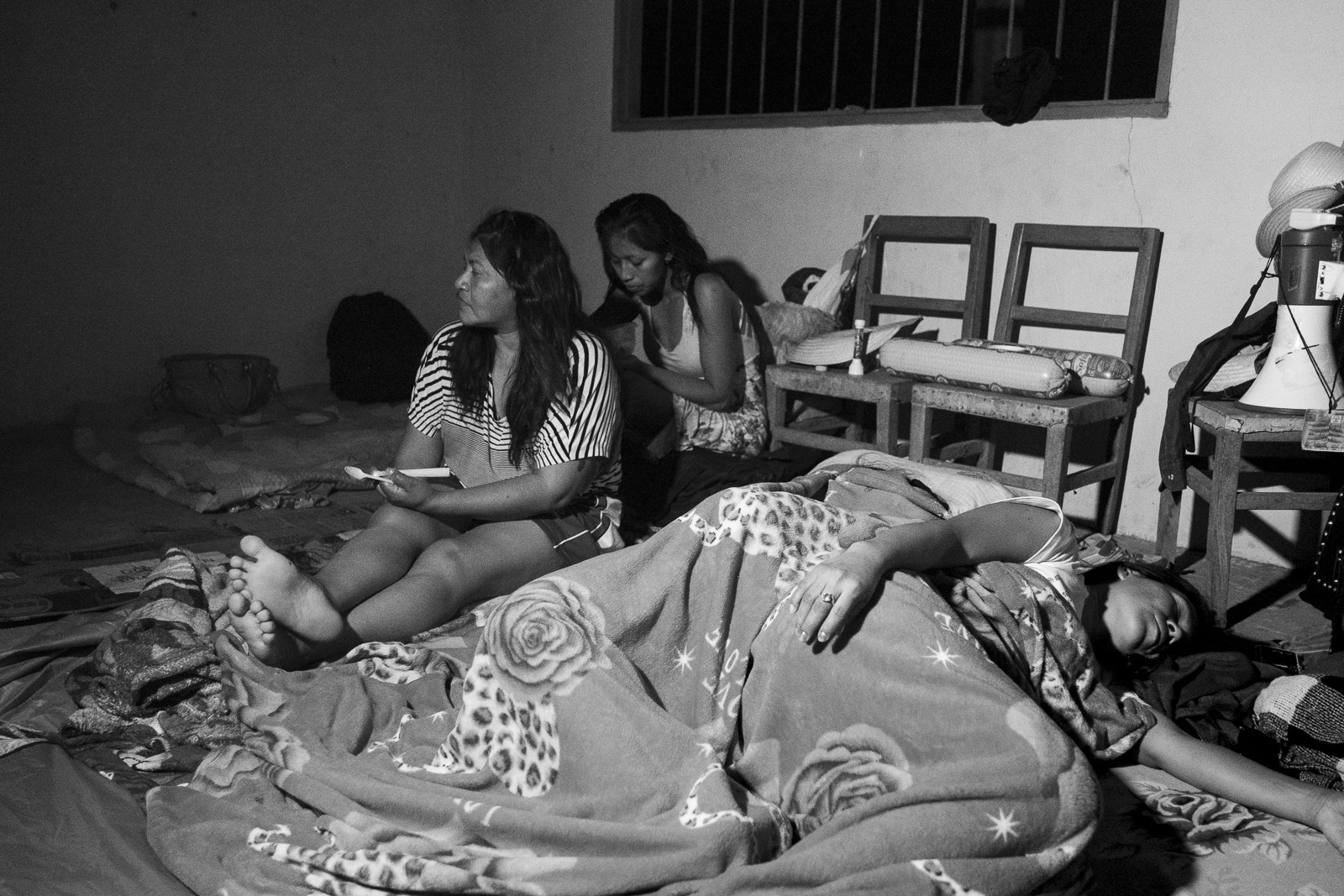
Members of the march rest in a house next to the dusty road after several hours of walking
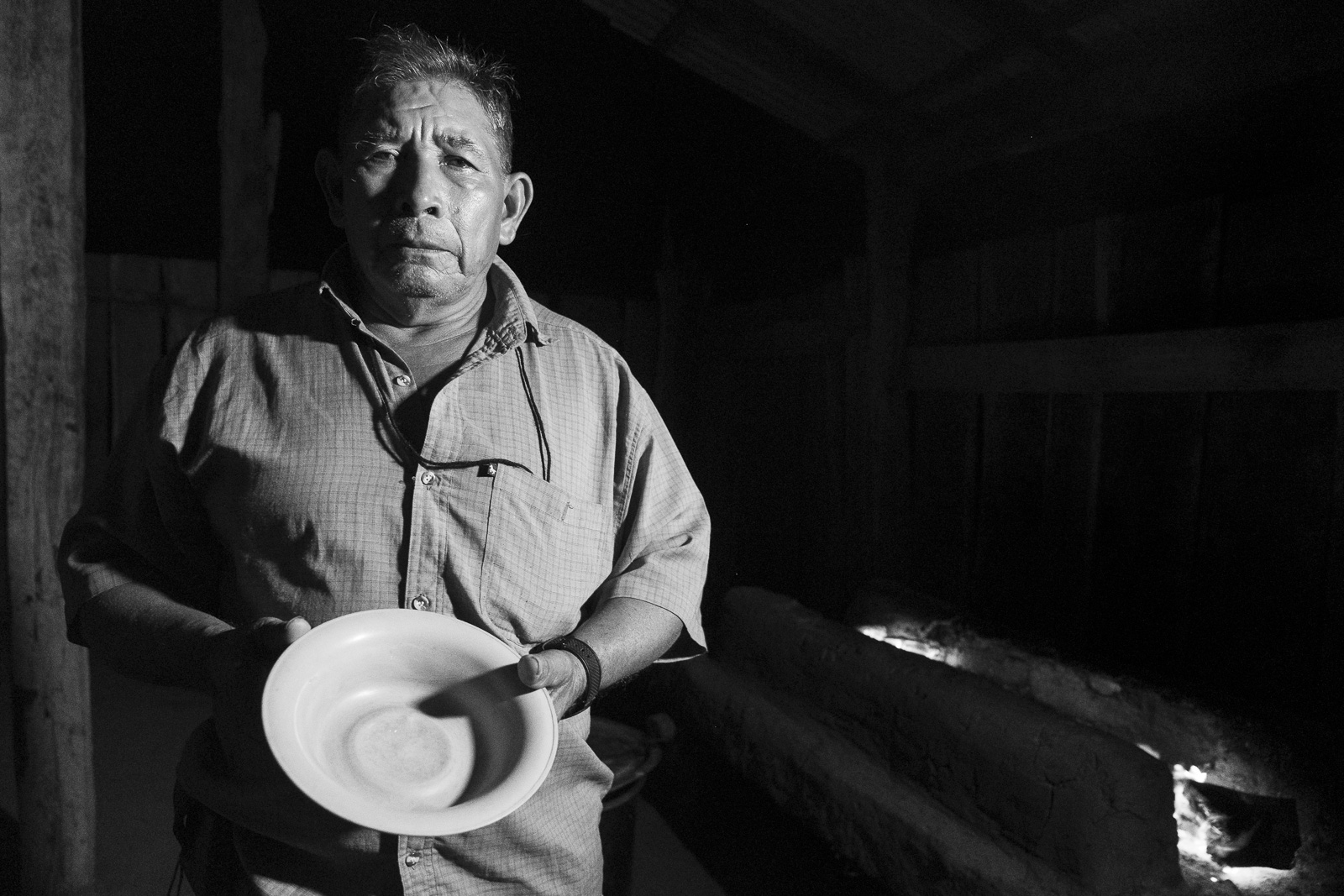
Don Miguel, 65 years old, indigenous march participant
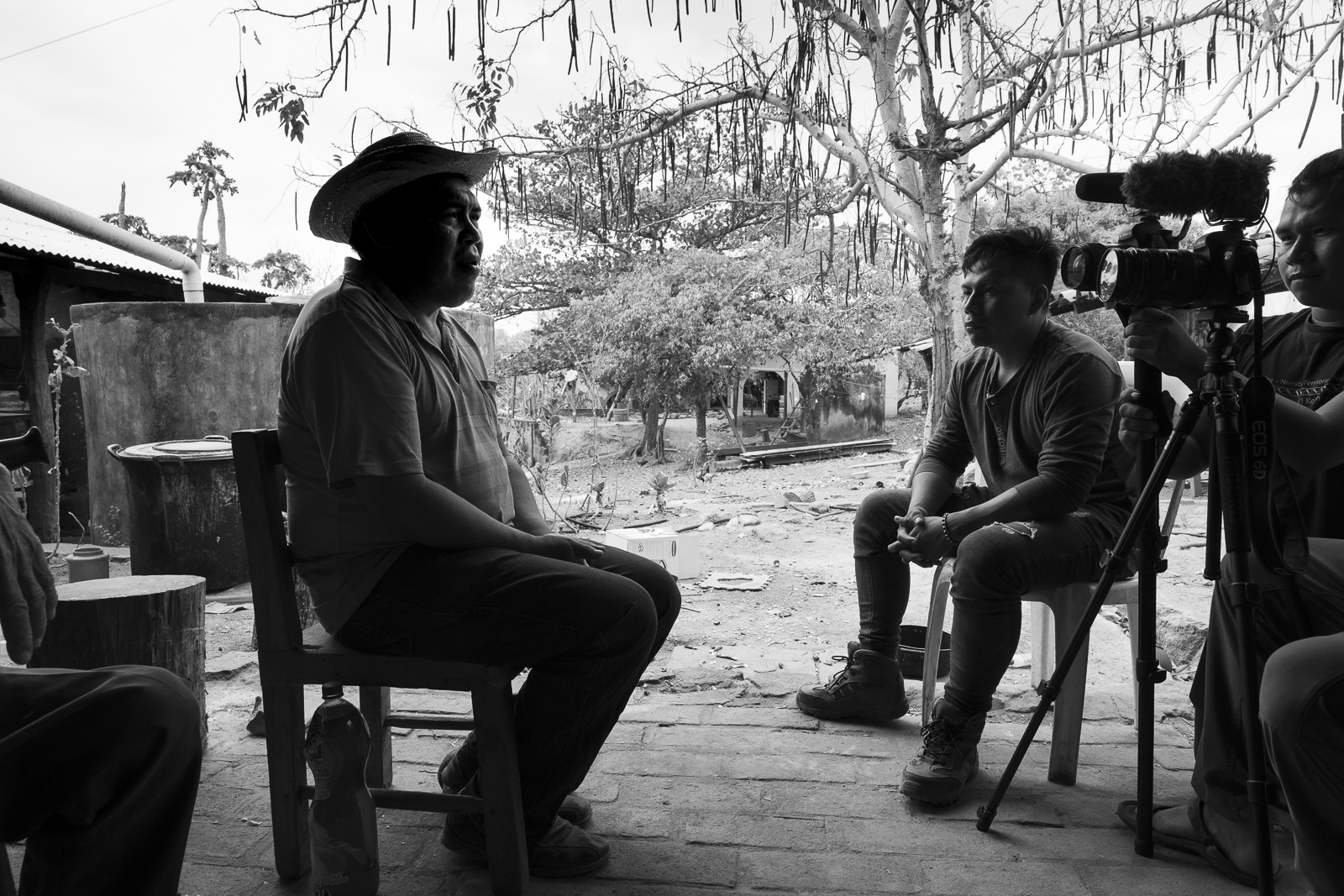
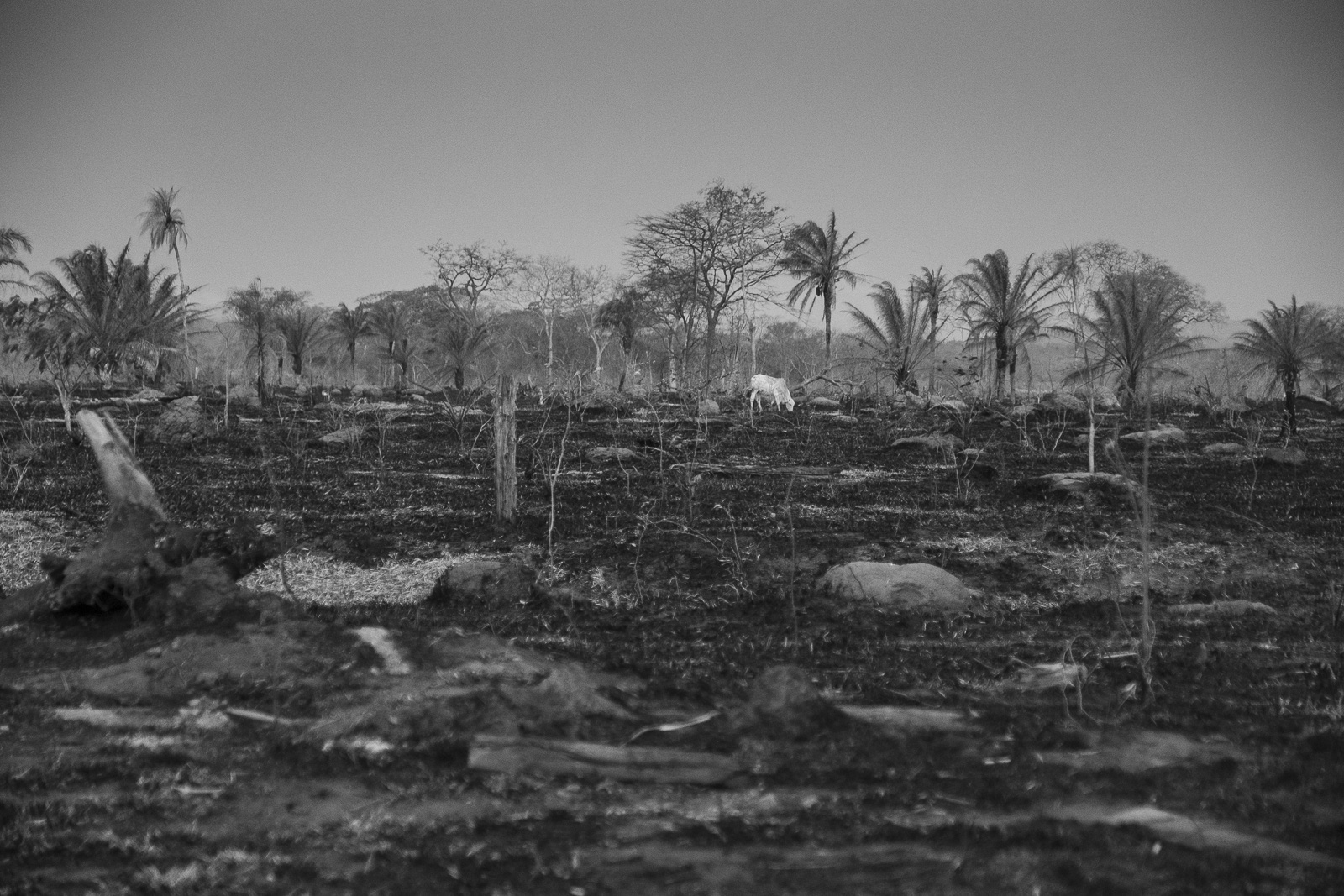
We were very moved by the experiences we lived alongside so many people during this trip. We now know that the Amazon may dry up in the future if the rights of indigenous peoples, their territories, and ways of life are not respected.

Century-old trees are cut down for their hard and fine wood, and then exported throughout the Chiquitanía
We are afraid to imagine an Amazon without water, without our own crops, without rain, without animals, without abundance, without life. Despite the distance between our territories, we now know that we have so much in common, and we clearly see that indigenous peoples have always been and will continue to be the guardians of Mother Earth – even despite the difficulties we face.
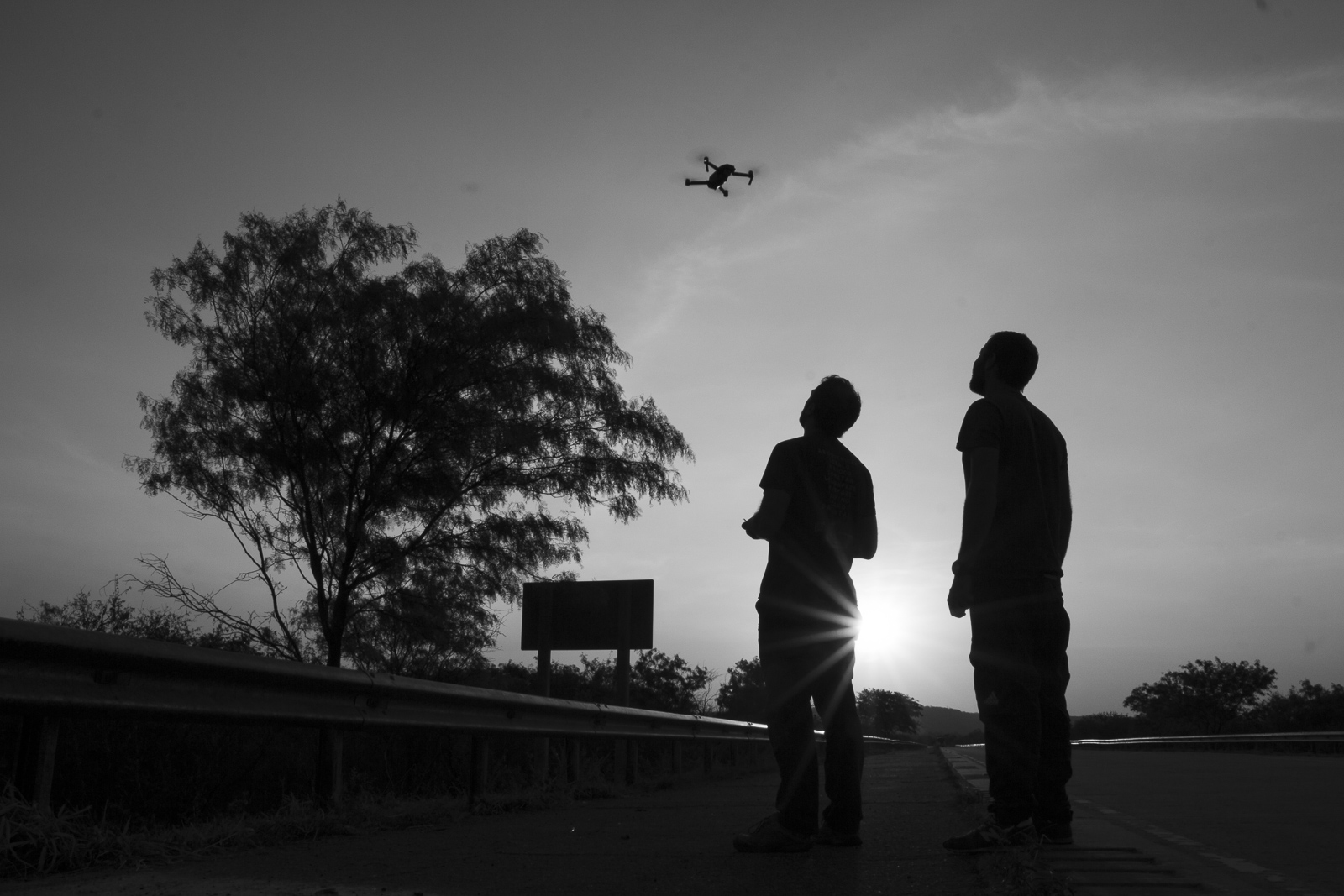
We need to become conscious of what is at stake, listen, understand and shine a light on these real problems in order to transform the world. As young indigenous people, we demand that they stop destroying the forest. We want people to understand that our life and planet depend largely on the Amazon, and that we all depend upon the land to live healthfully and well. We also don’t want our peoples to be forgotten. This struggle is just beginning, and the days ahead are even harder and more disturbing.
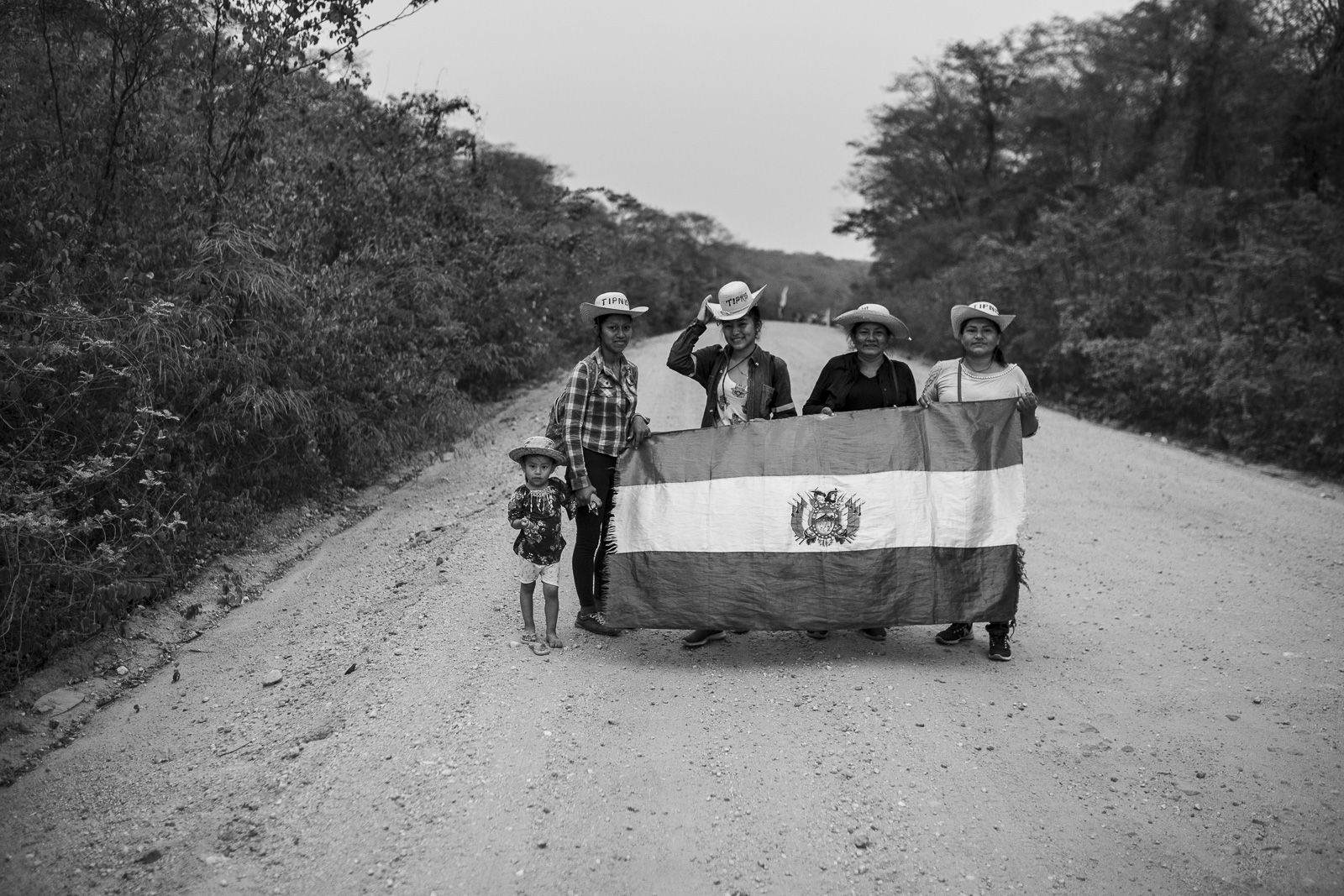
As indigenous peoples of the Ecuadorian Amazon, we say to our brothers and sisters in the Bolivian Amazon: “Let the struggle continue! Let us defend our forest until the end, even risking our lives. Your ancestors and our ancestors lead the way. Let’s keep resisting in this battle, it has not yet been lost.”


